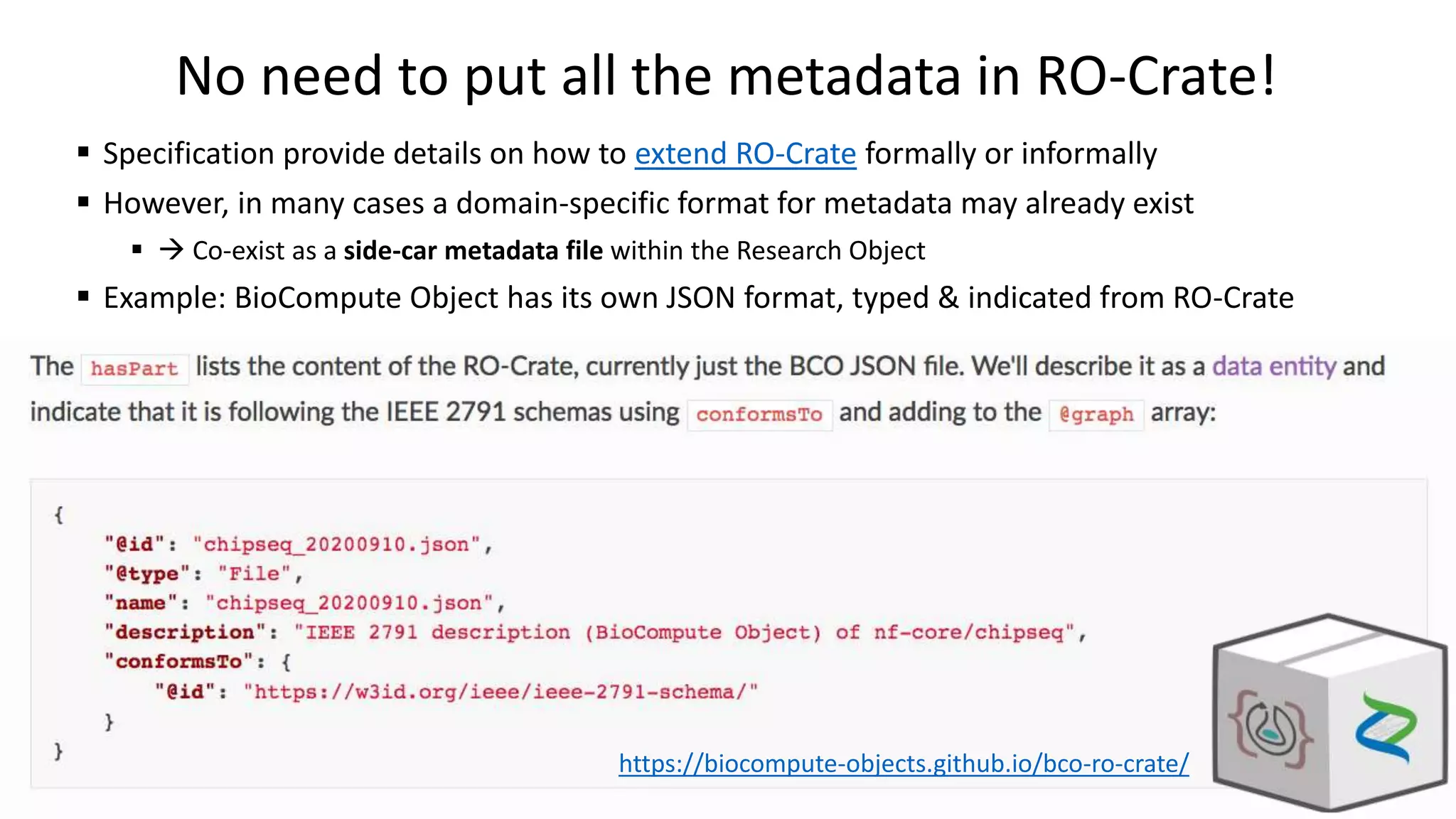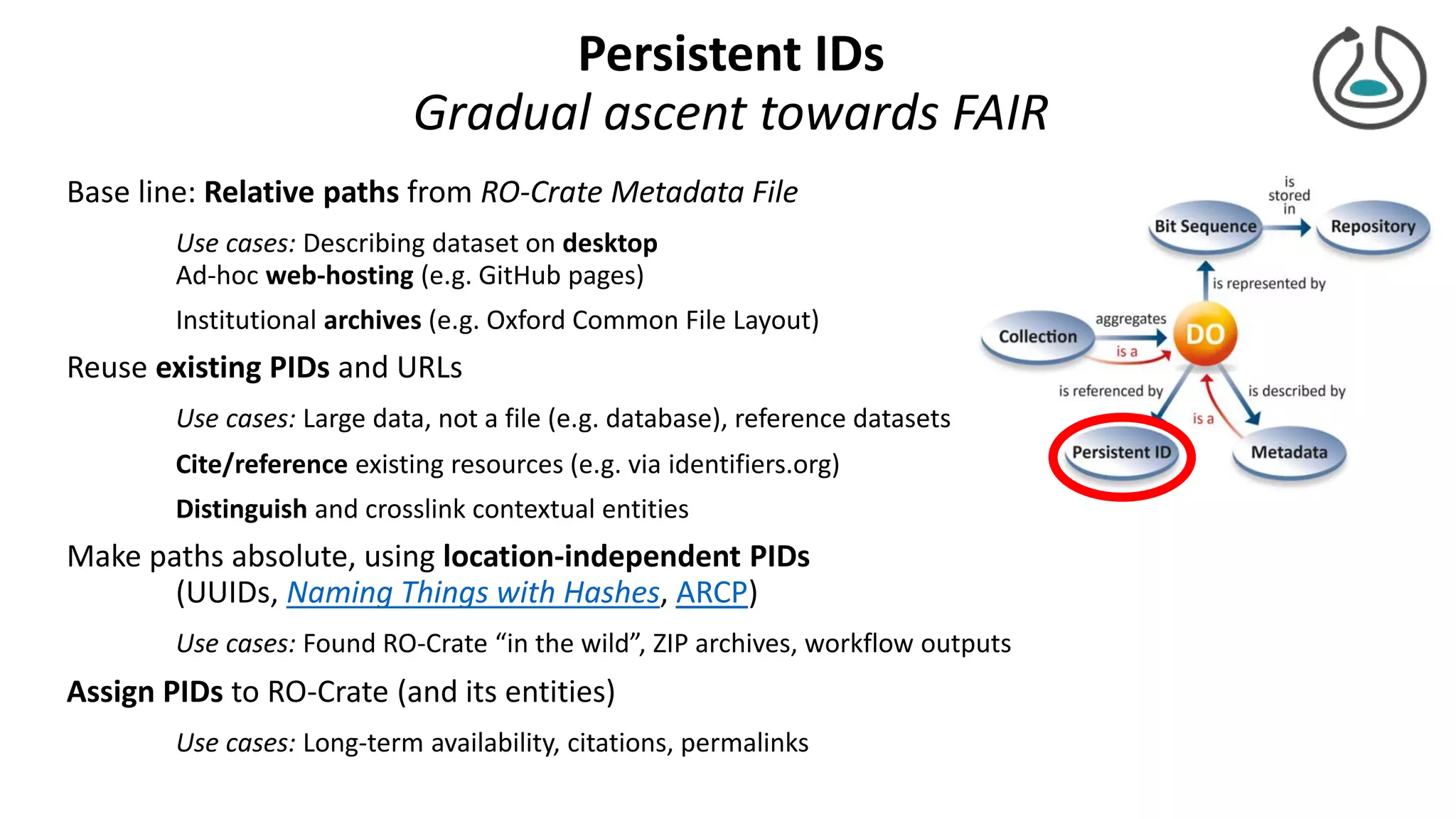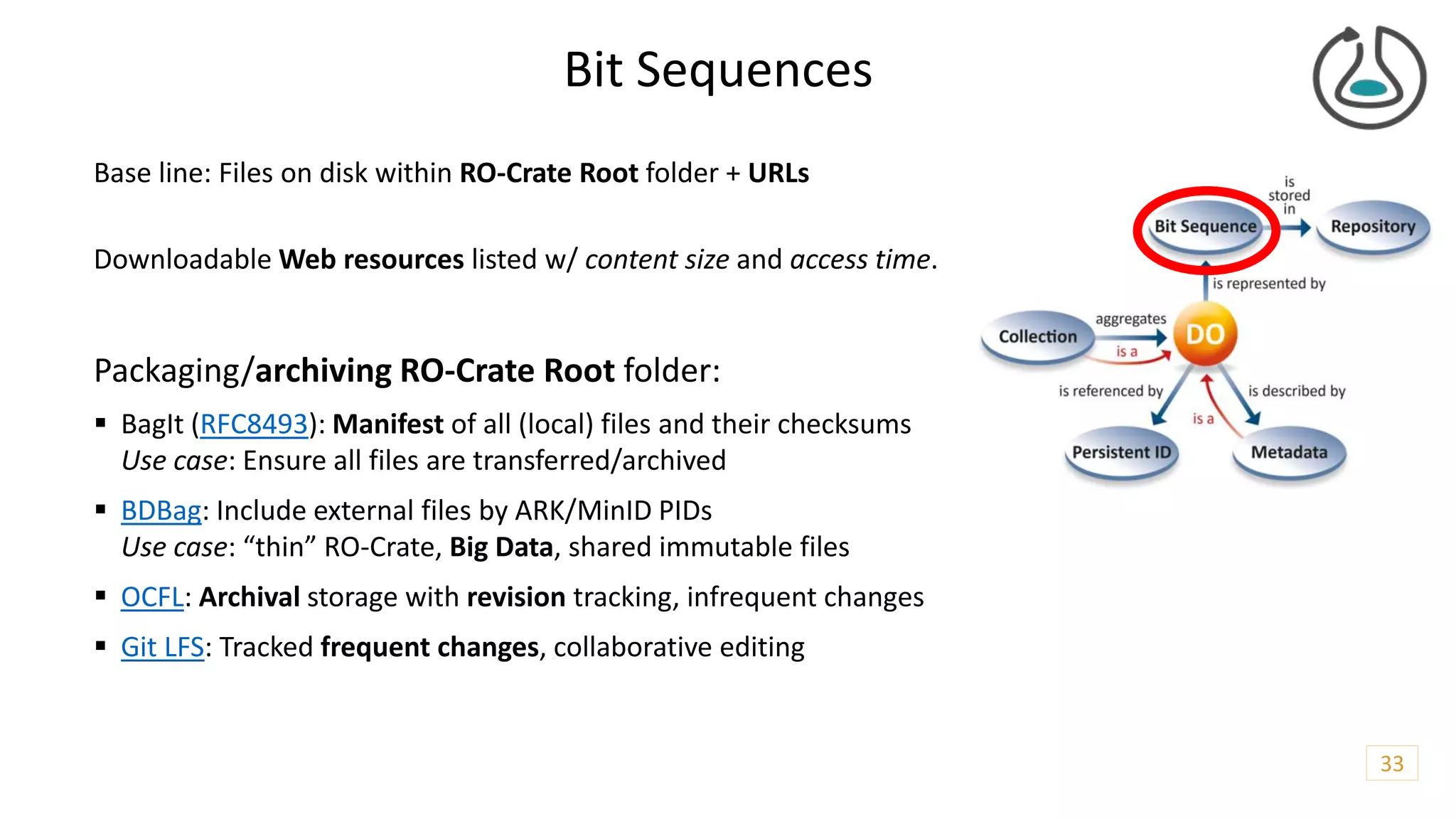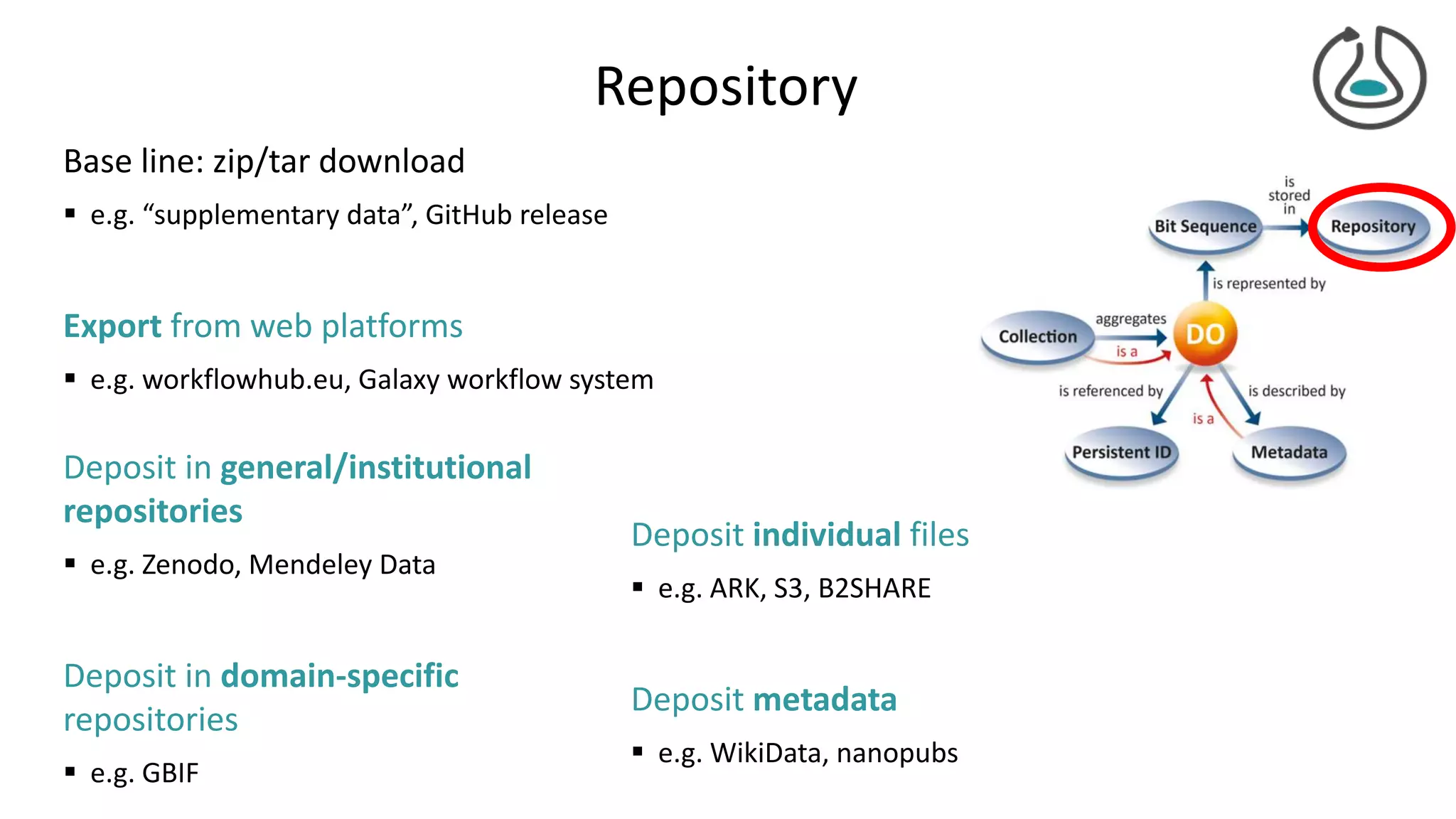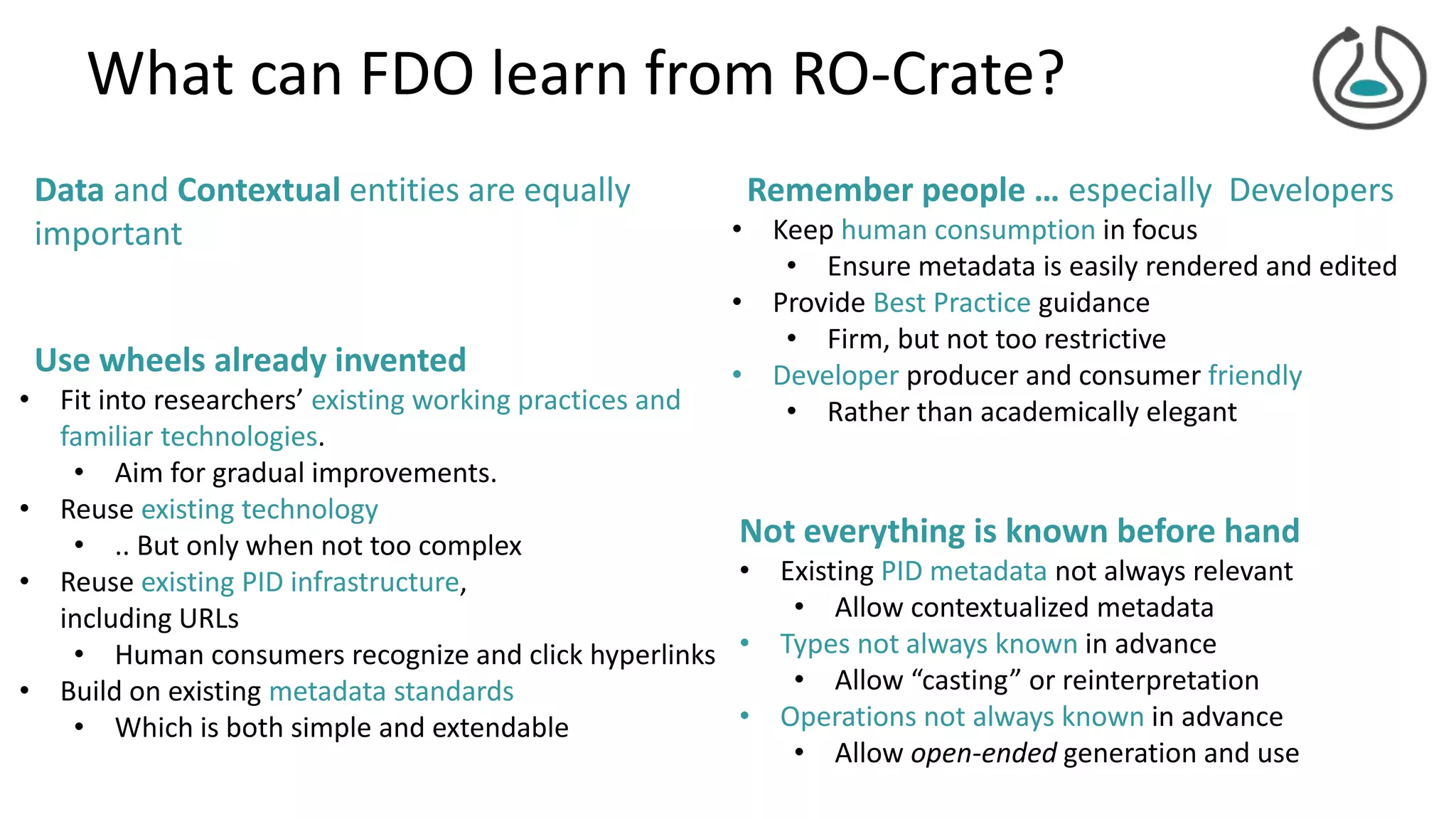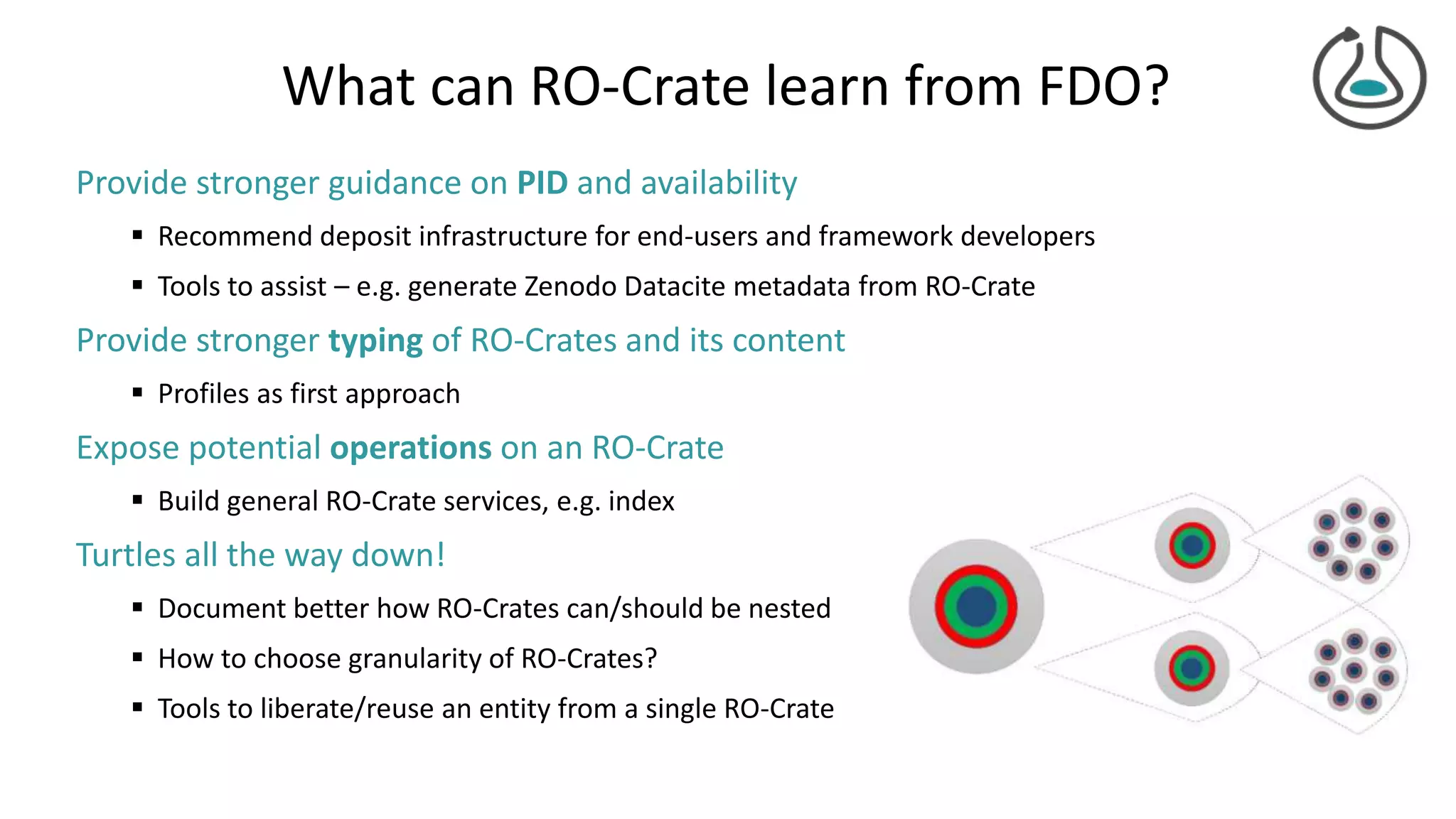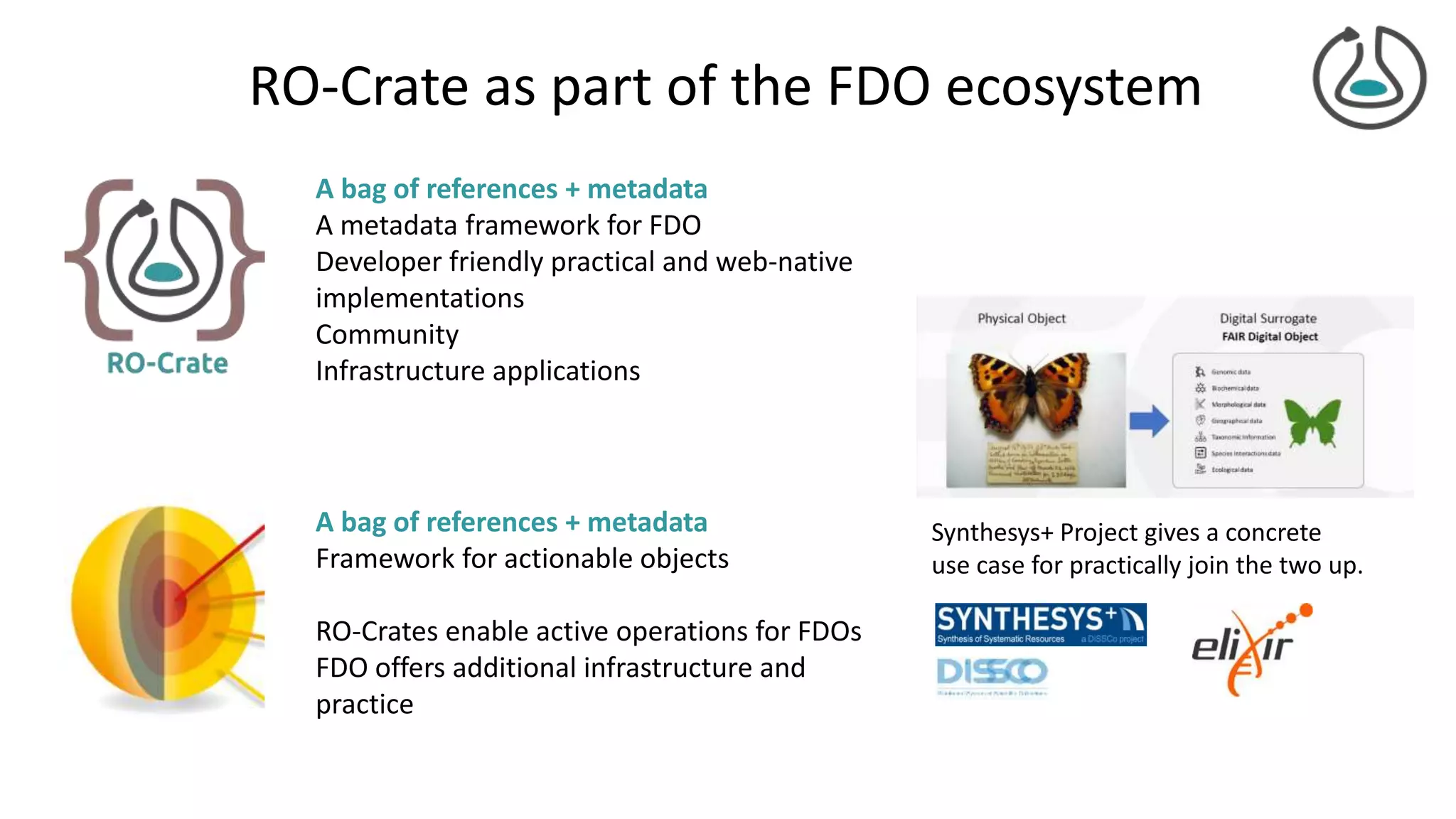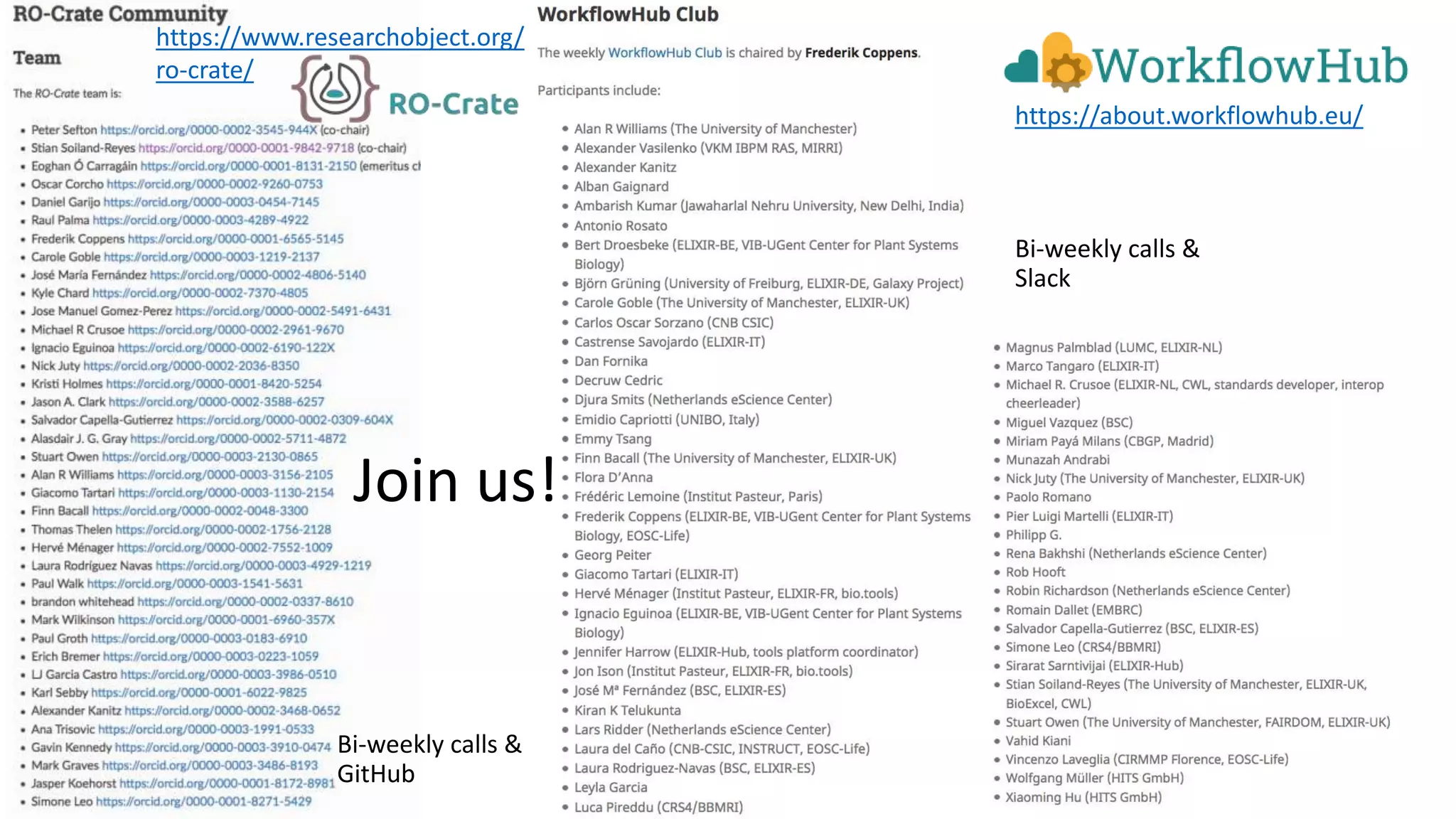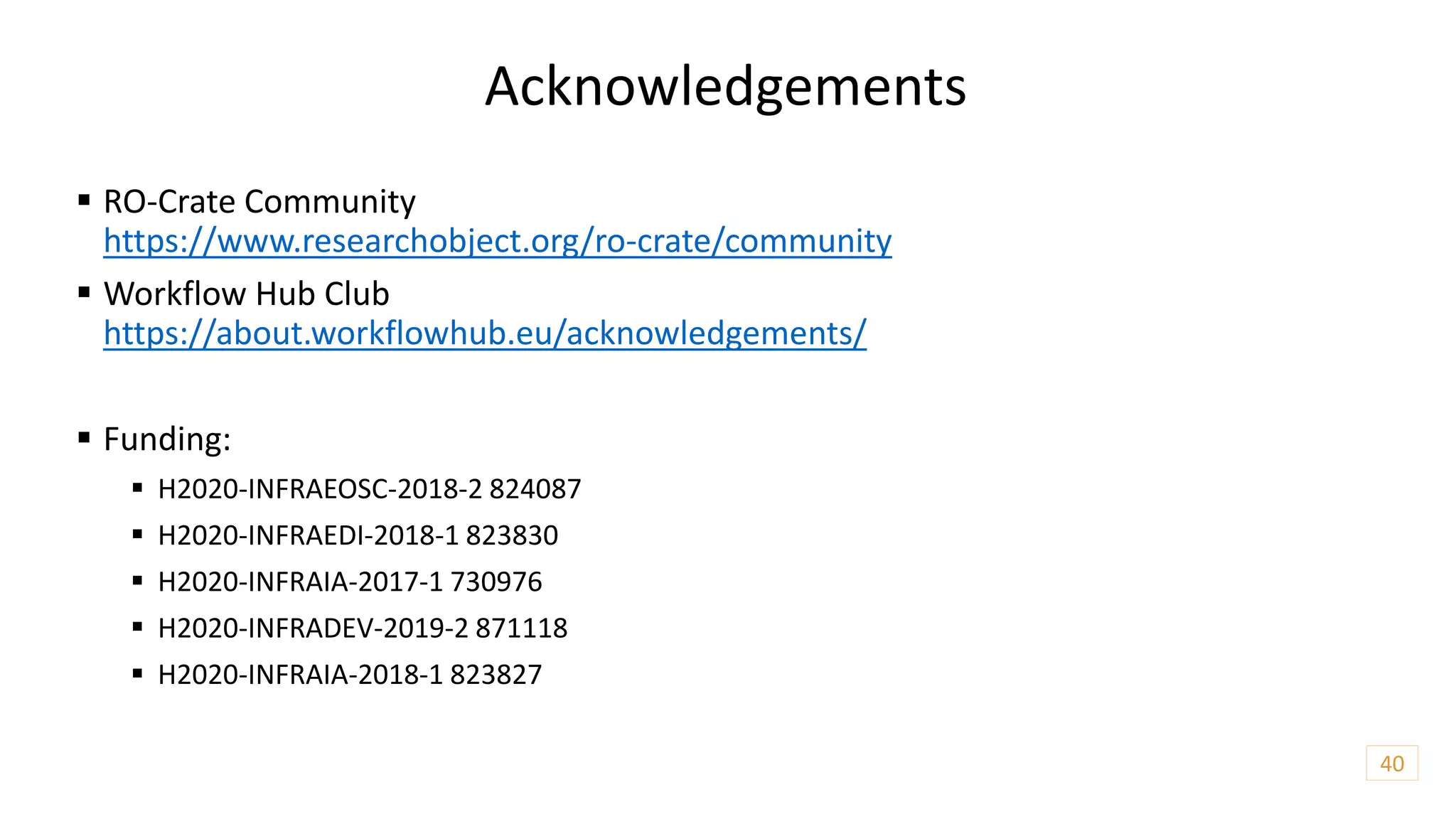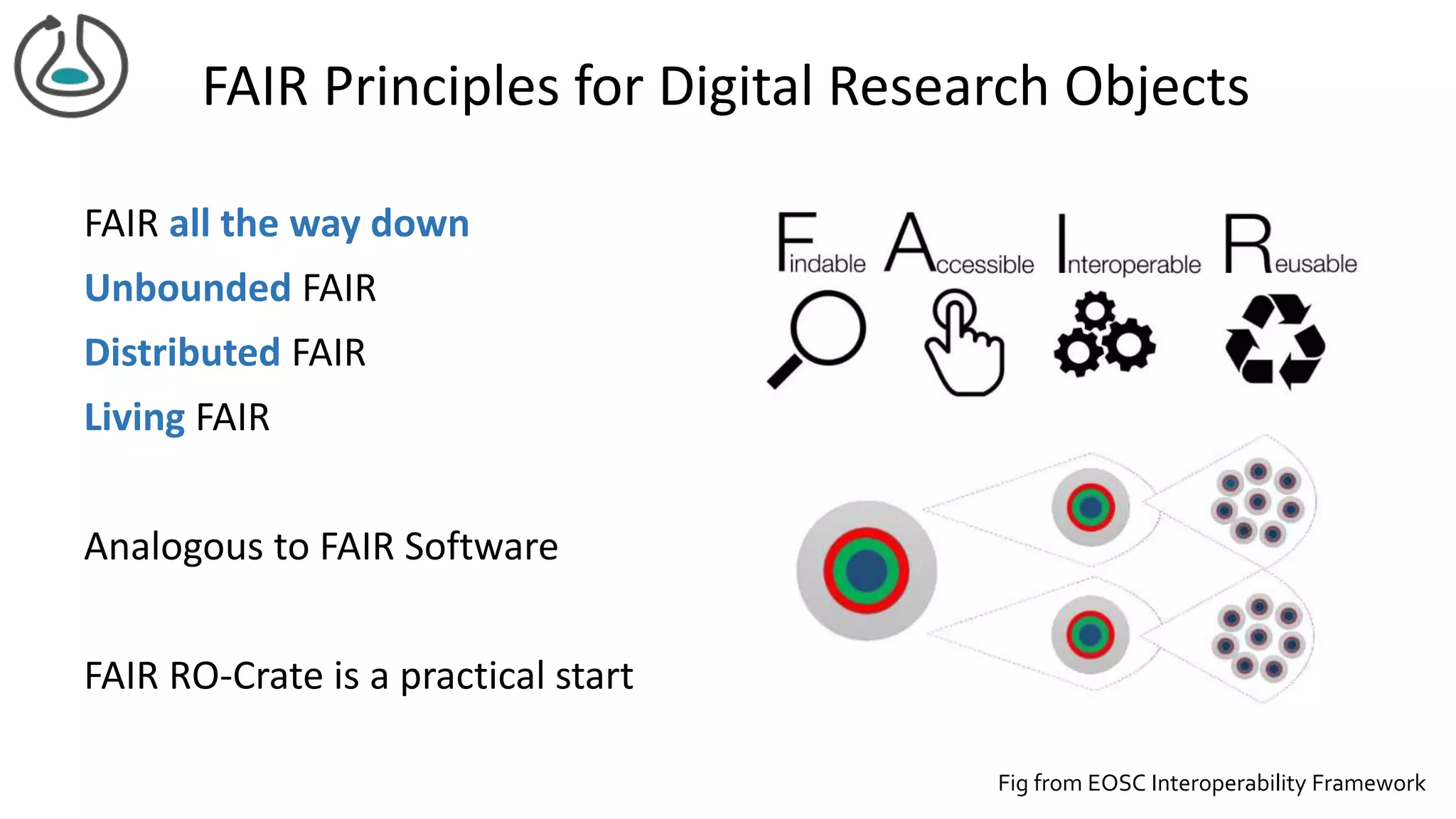The document introduces ro-crate, a web standards-based framework for packaging research products into FAIR (Findable, Accessible, Interoperable, Reusable) research objects. It highlights the importance of machine-actionable metadata and identifiers for creating reproducible research packages and outlines examples, tools, and practical guidance for users. The framework aims to enhance the accessibility and interoperability of research data by enabling contextualized metadata representation and promoting reuse of existing technological infrastructures.
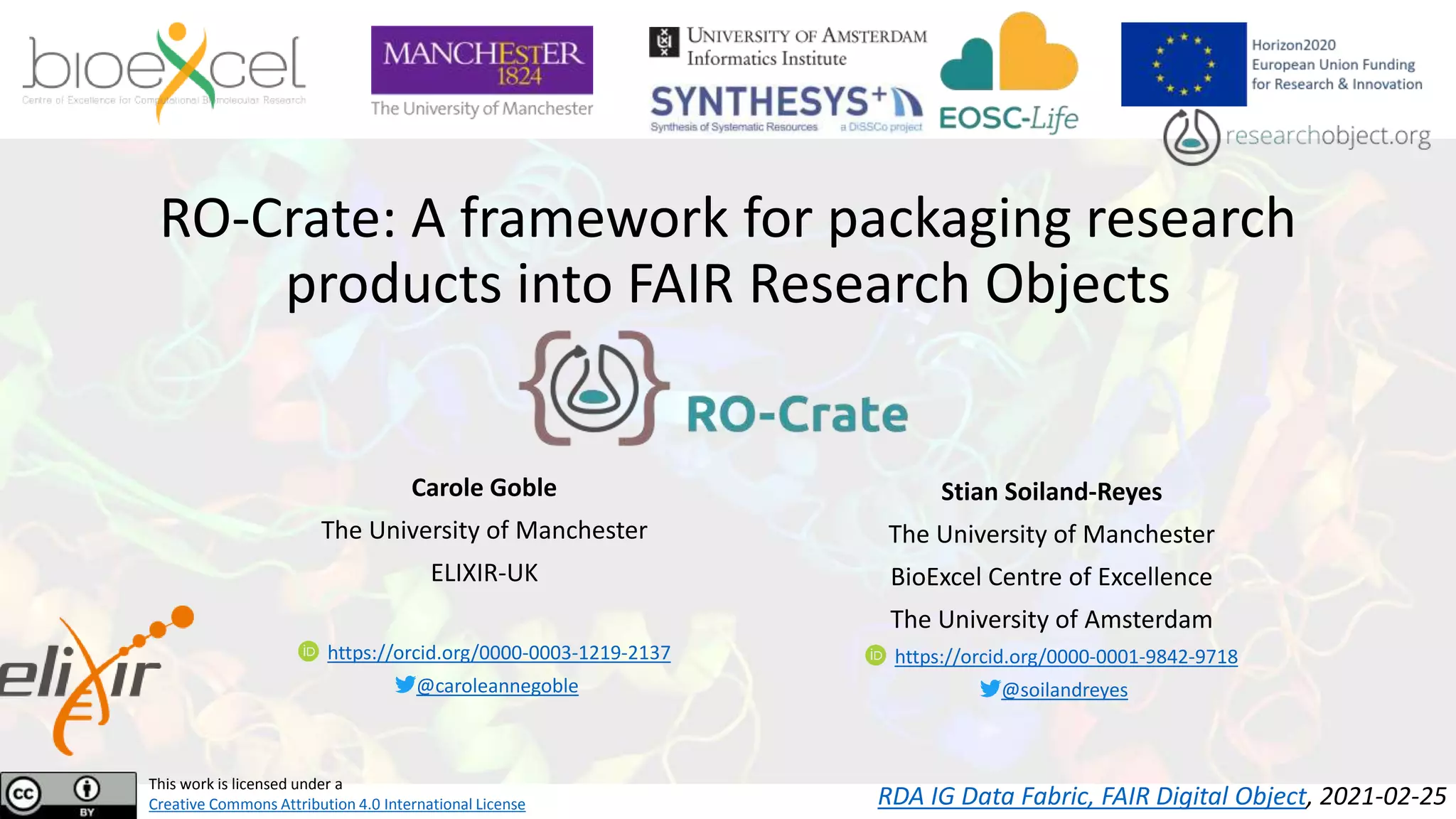
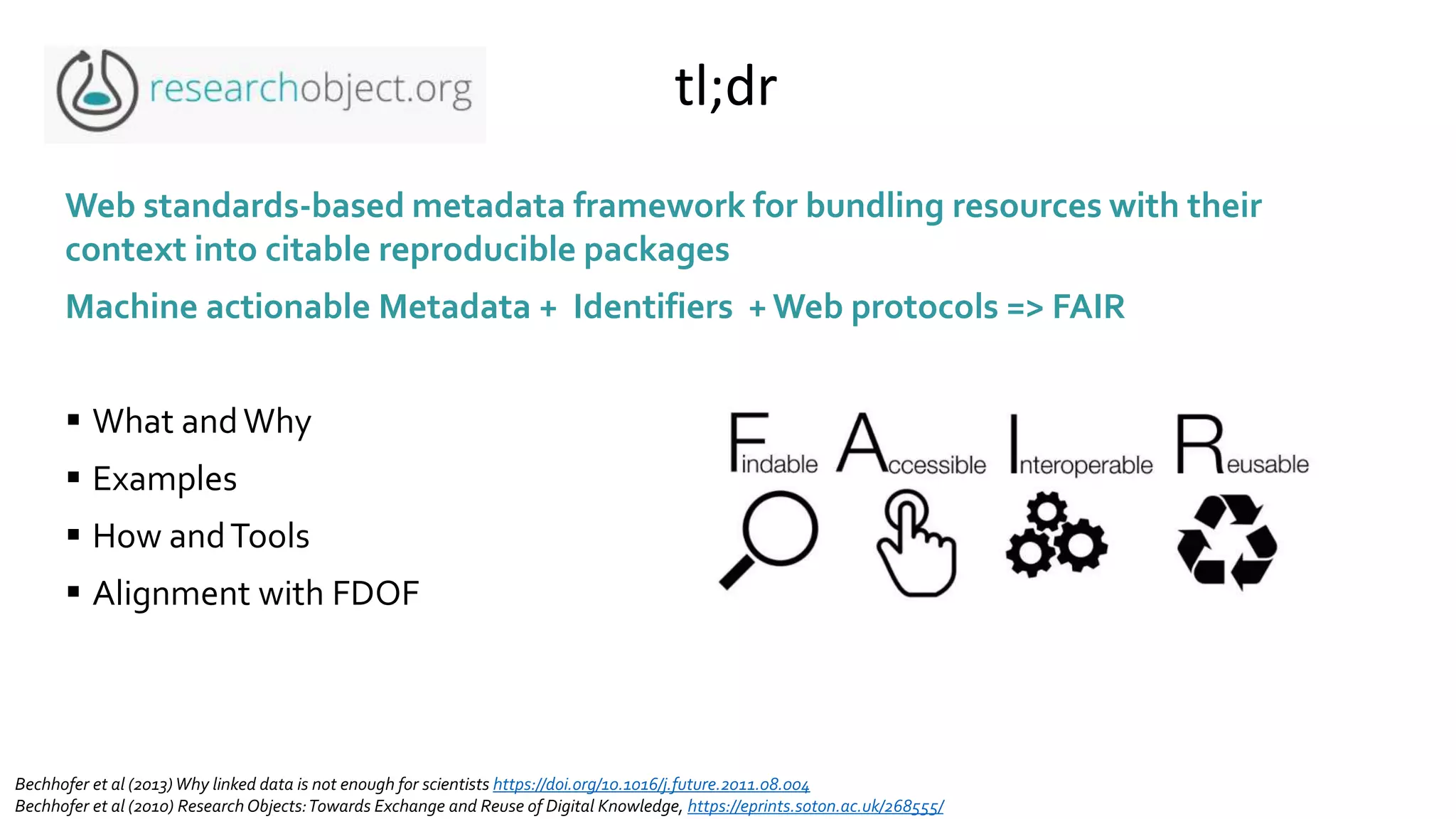
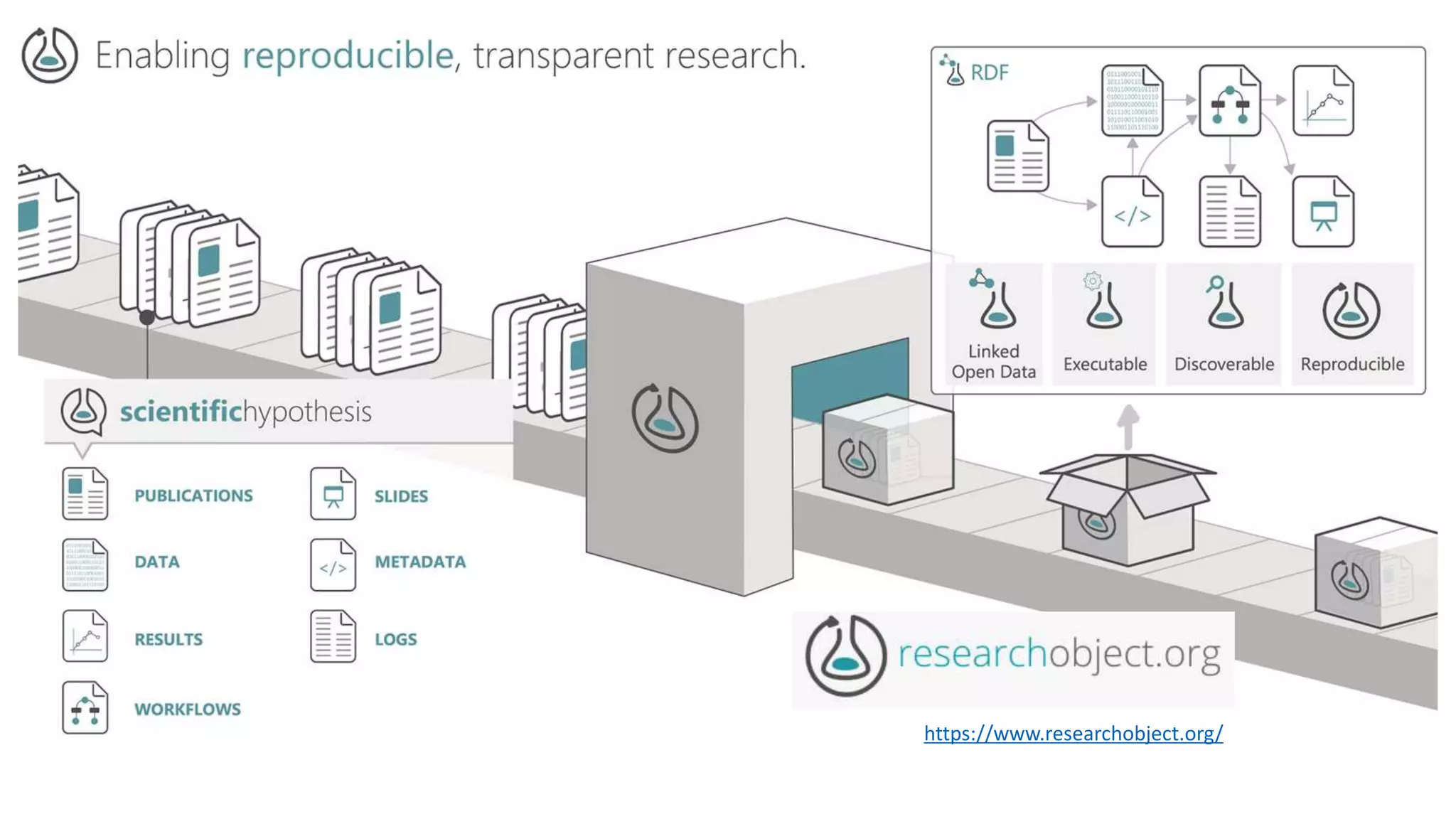
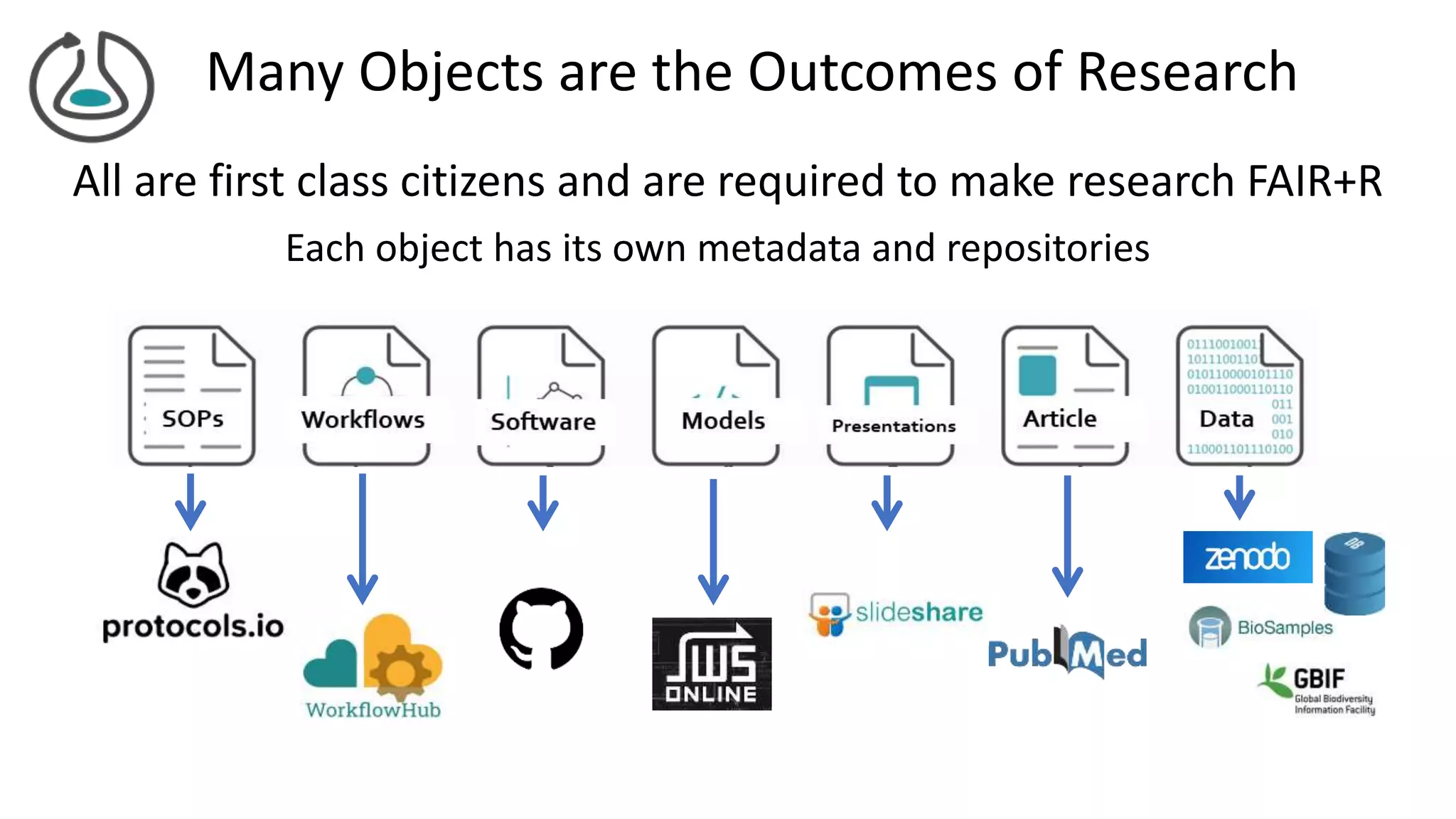
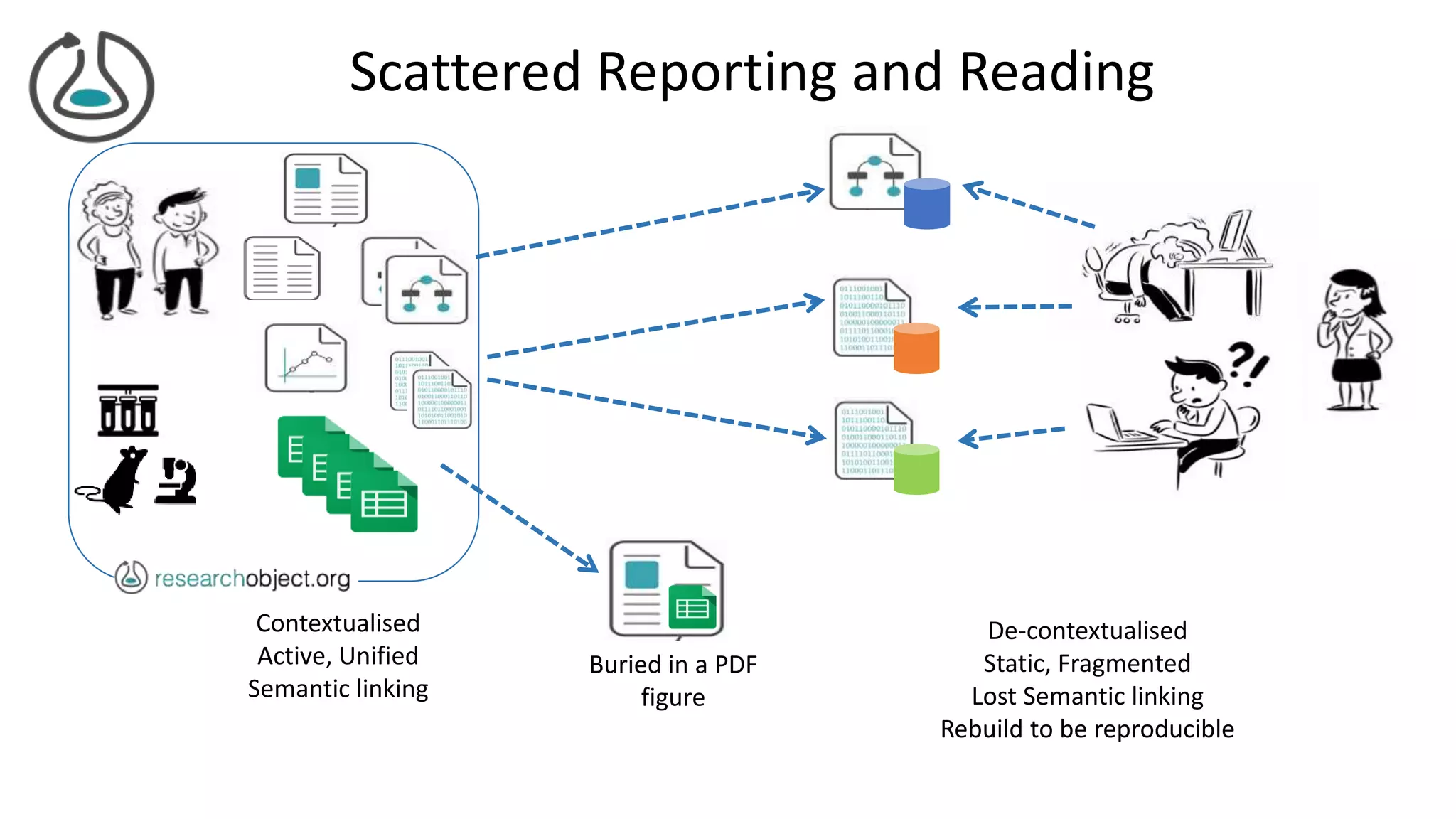
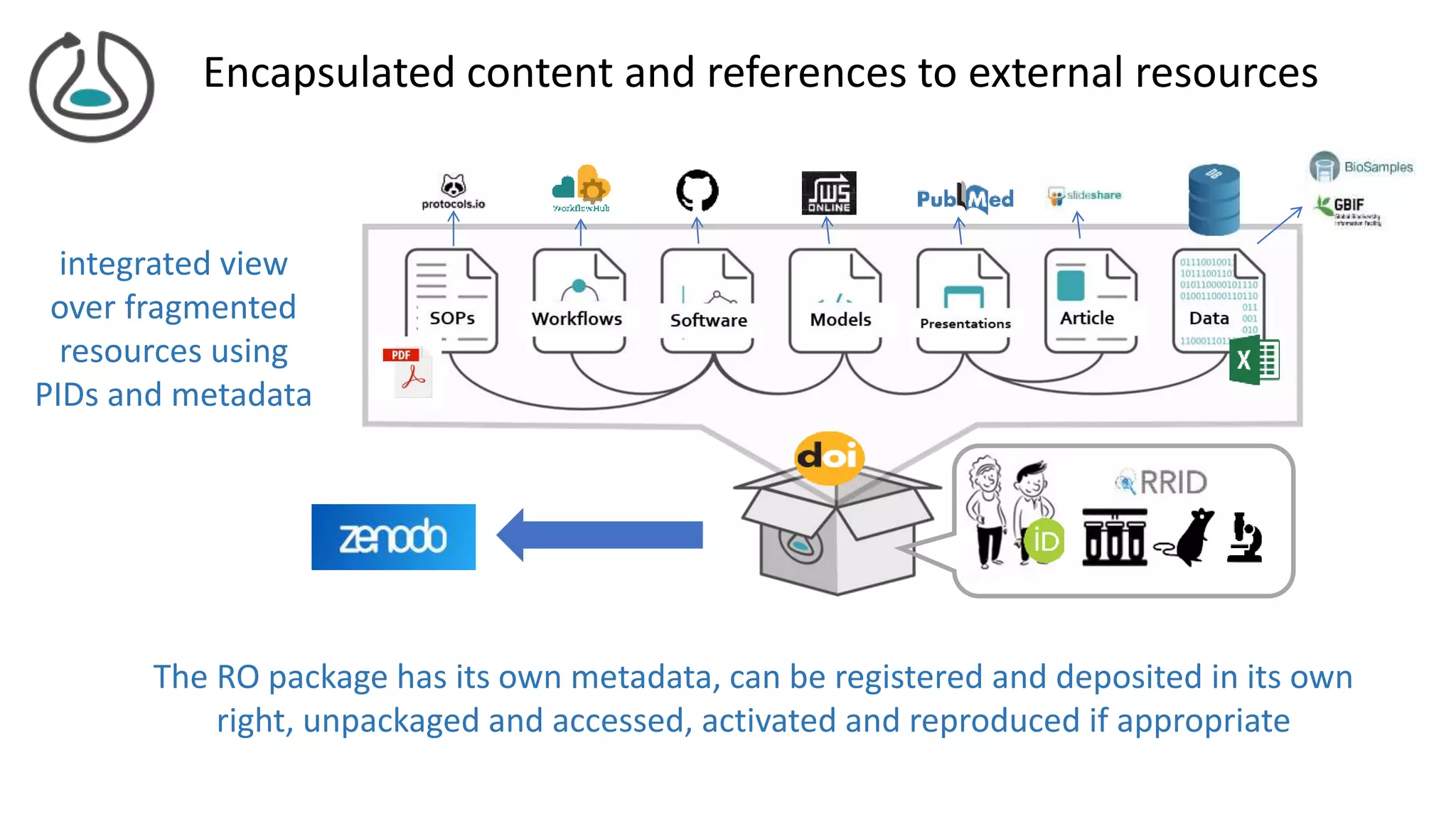
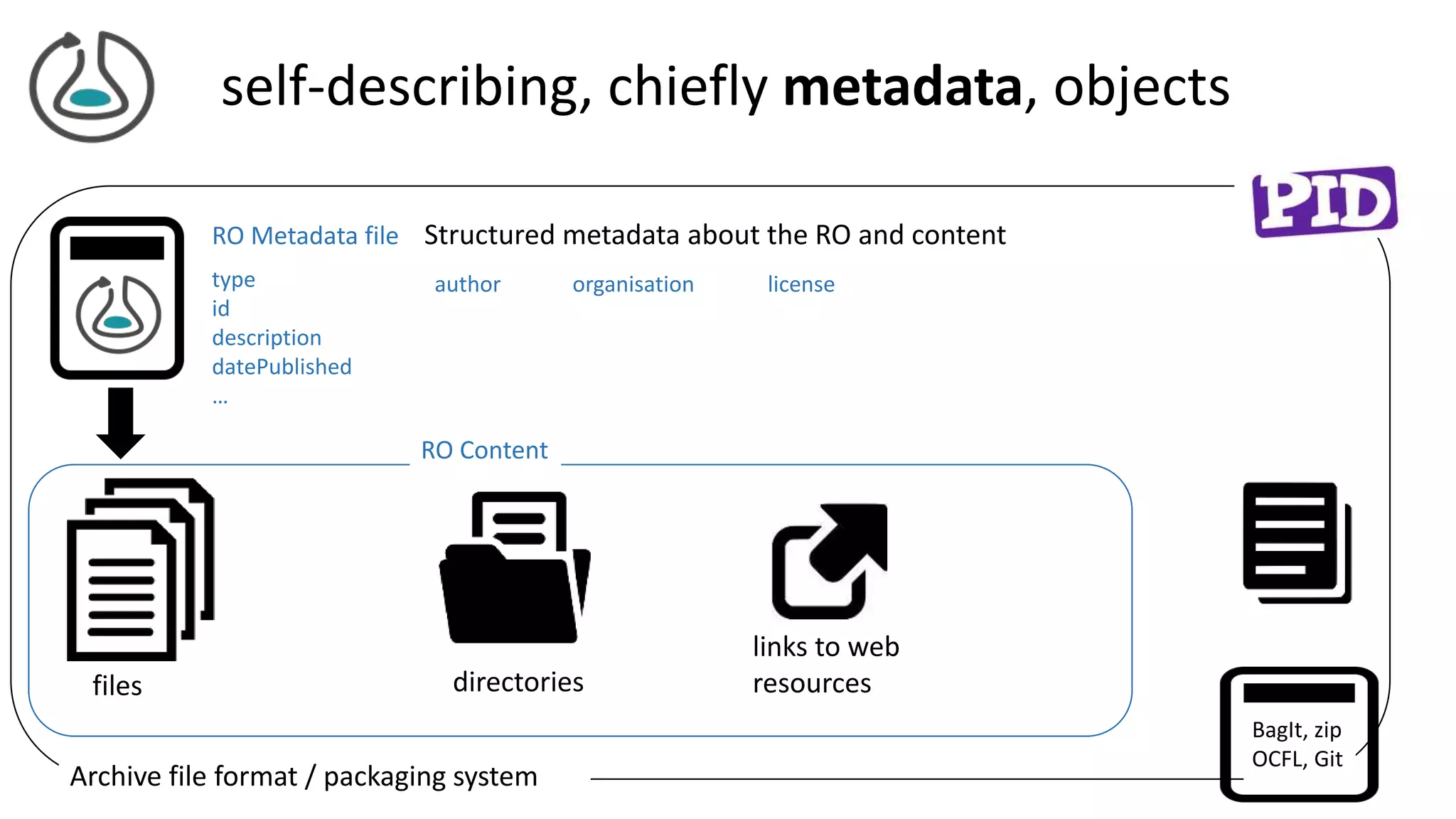
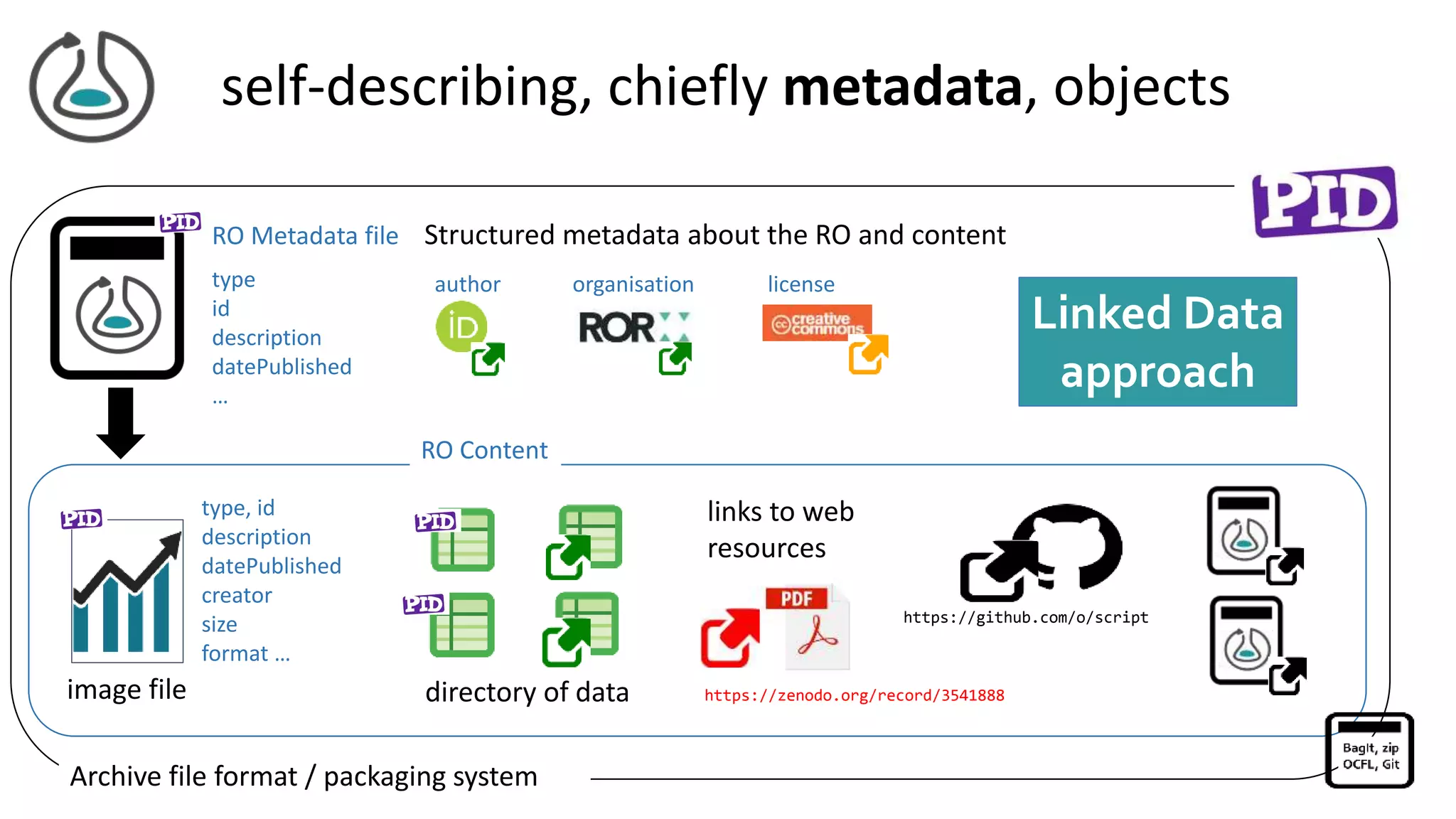
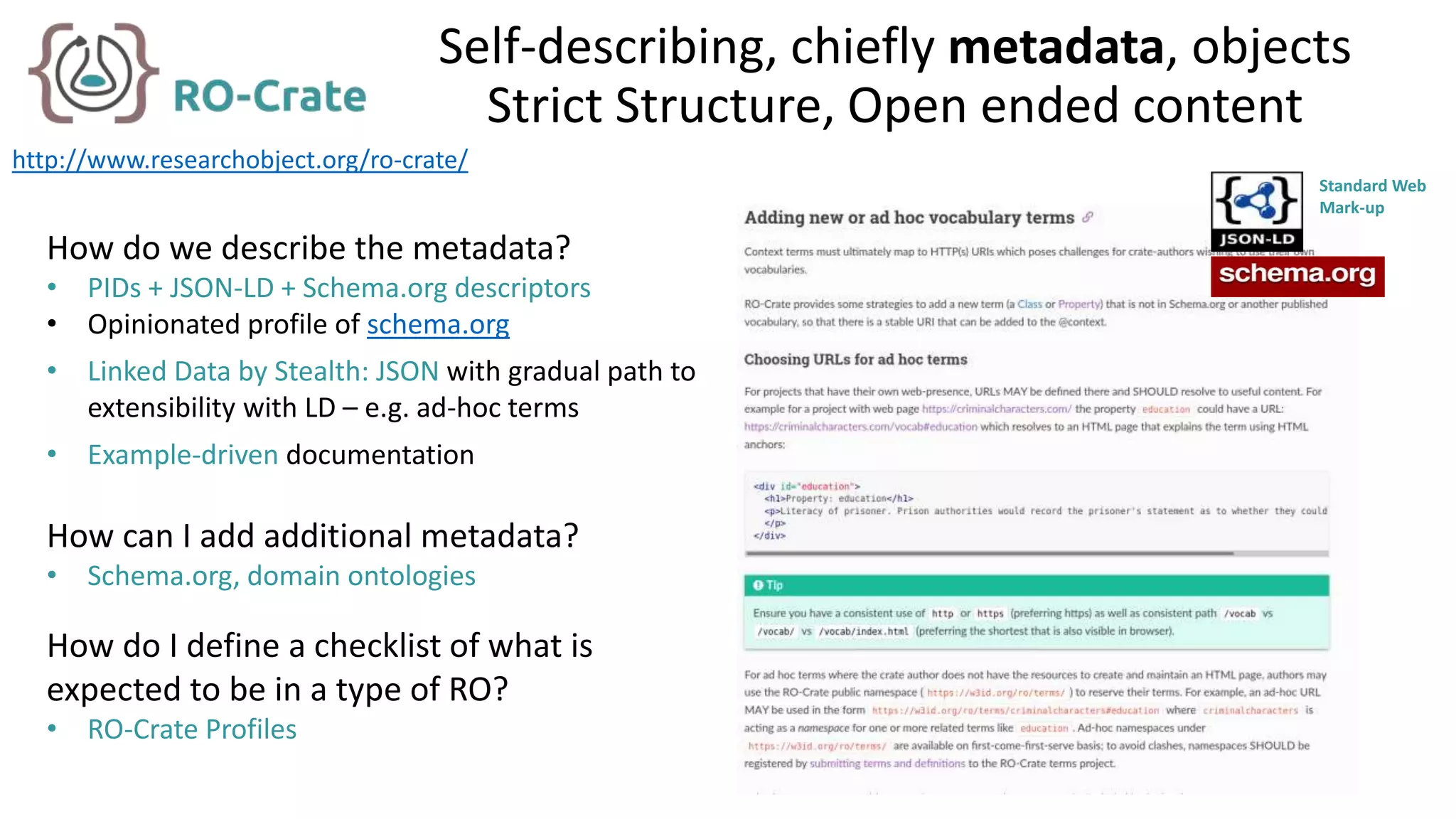
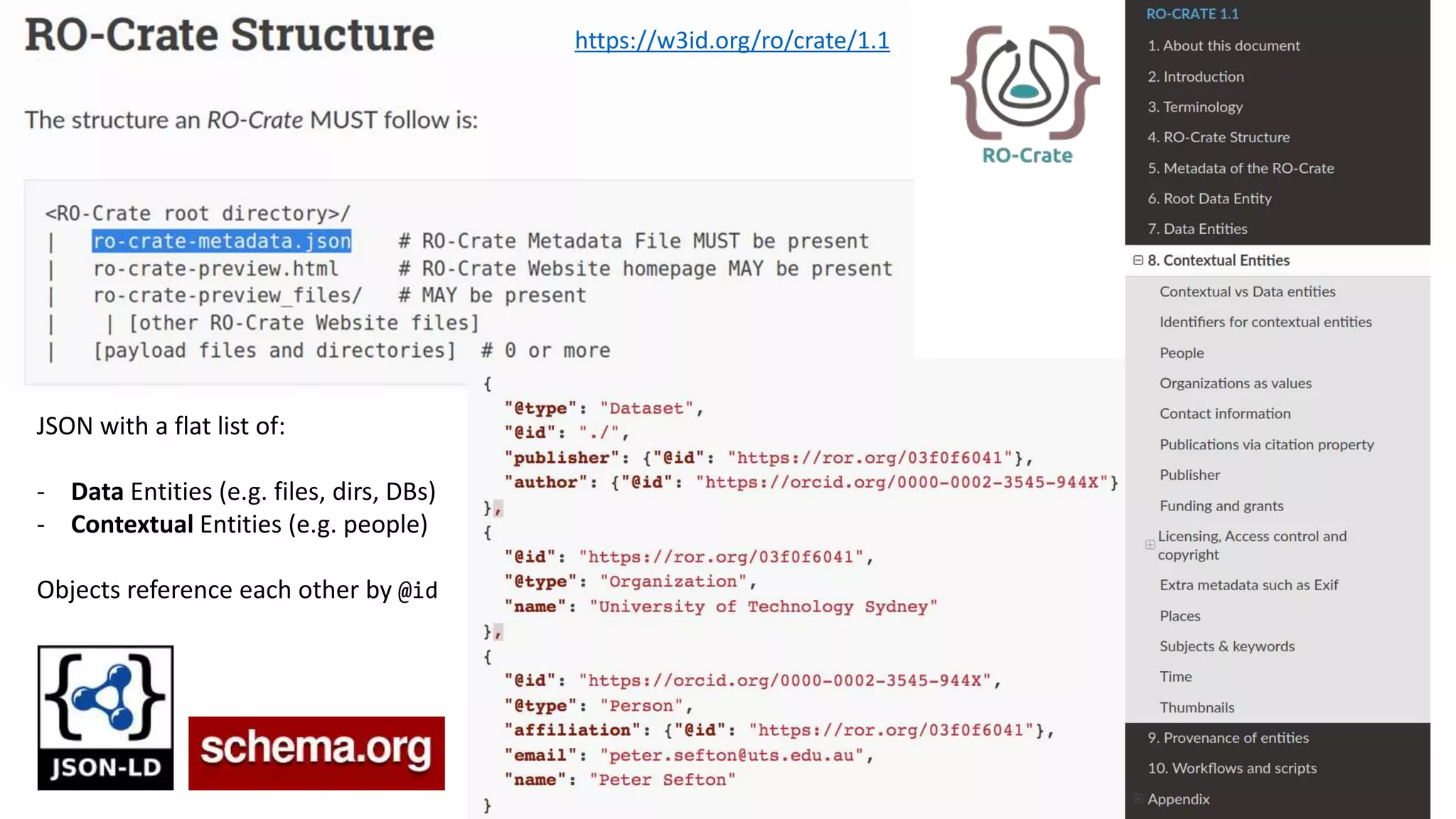
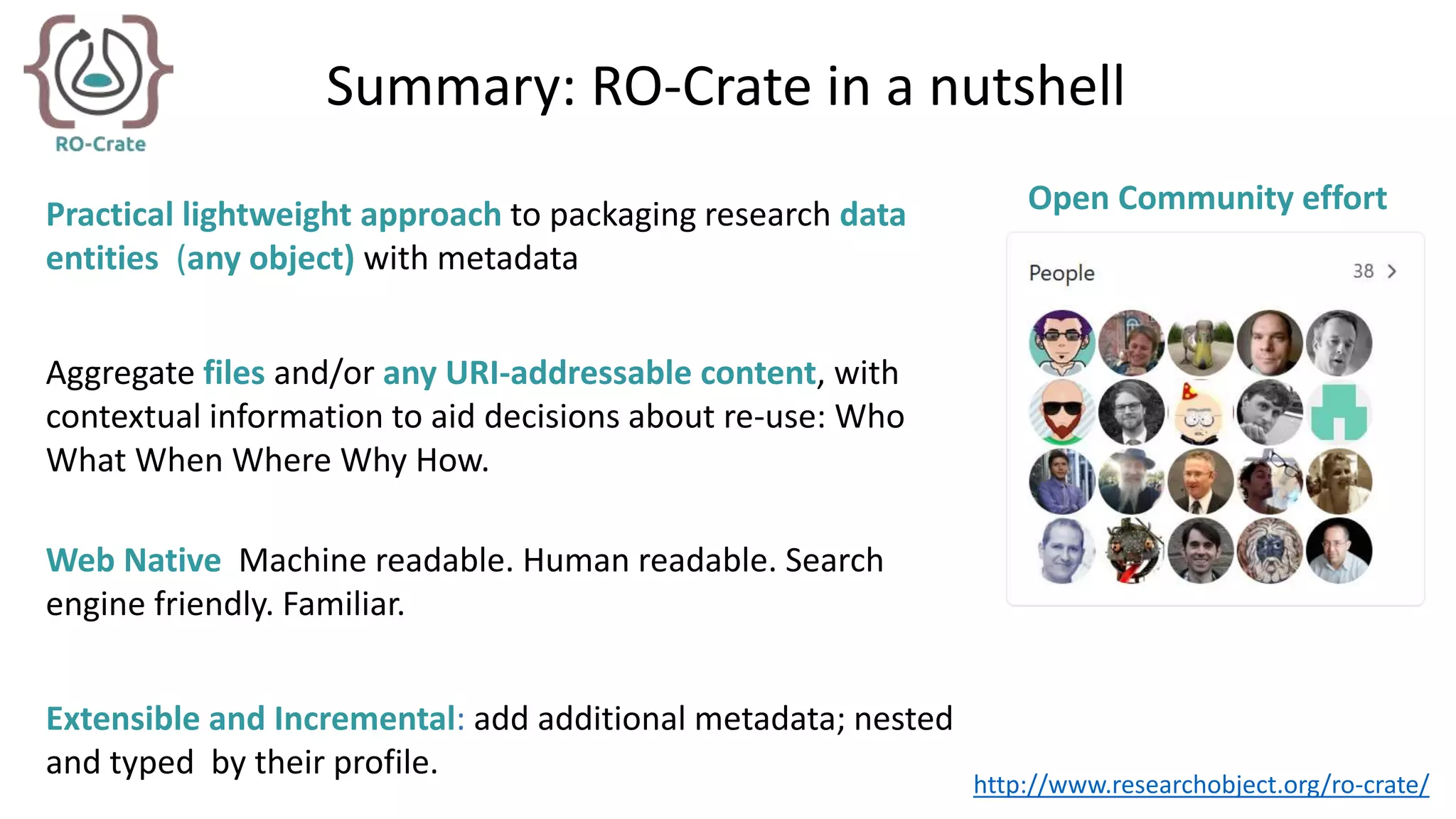
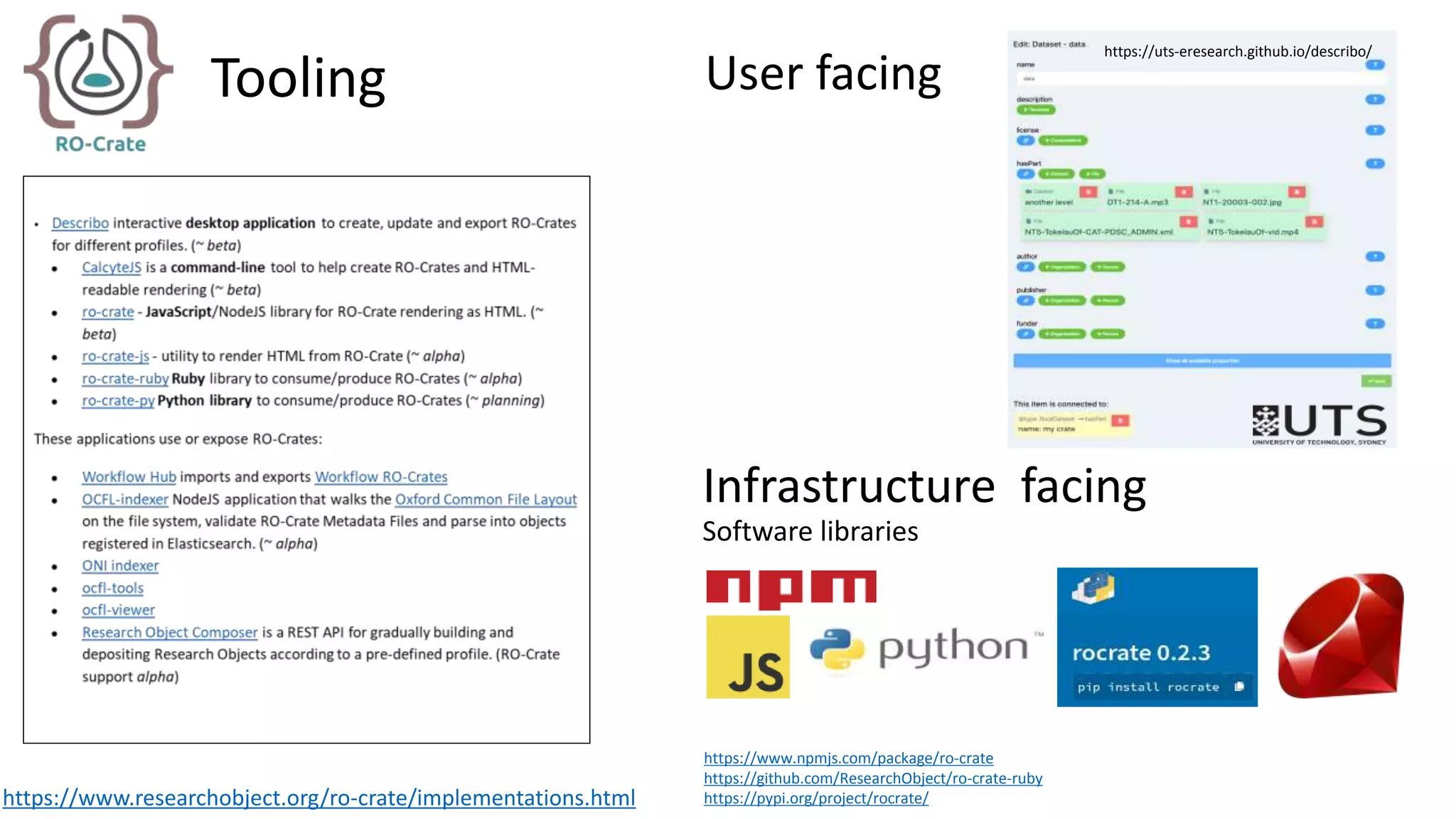
![Cultural Heritage: A data curation service for
endangered languages: 500,000 files in
28,624 items and 574 collections
long term preservation and
accessibility of research data objects
https://arkisto-platform.github.io/
[Marco La Rosa, Peter Sefton]](https://image.slidesharecdn.com/2021-02-25-ro-crate-fdo-final-210303145802/75/RO-Crate-A-framework-for-packaging-research-products-into-FAIR-Research-Objects-13-2048.jpg)
![Scalable verified
collections of references
Processing big genomic & clinical data
distributed over multiple locations
NIH Data Commons
[Chard, et al 2016]
https://doi.org/10.1109/BigData.2016.7840618
minids
Retain and archive processed datasets
Reference and transfer large data on demand
Controlled access to sensitive data
[Kesselman, Foster]
minids minids](https://image.slidesharecdn.com/2021-02-25-ro-crate-fdo-final-210303145802/75/RO-Crate-A-framework-for-packaging-research-products-into-FAIR-Research-Objects-14-2048.jpg)
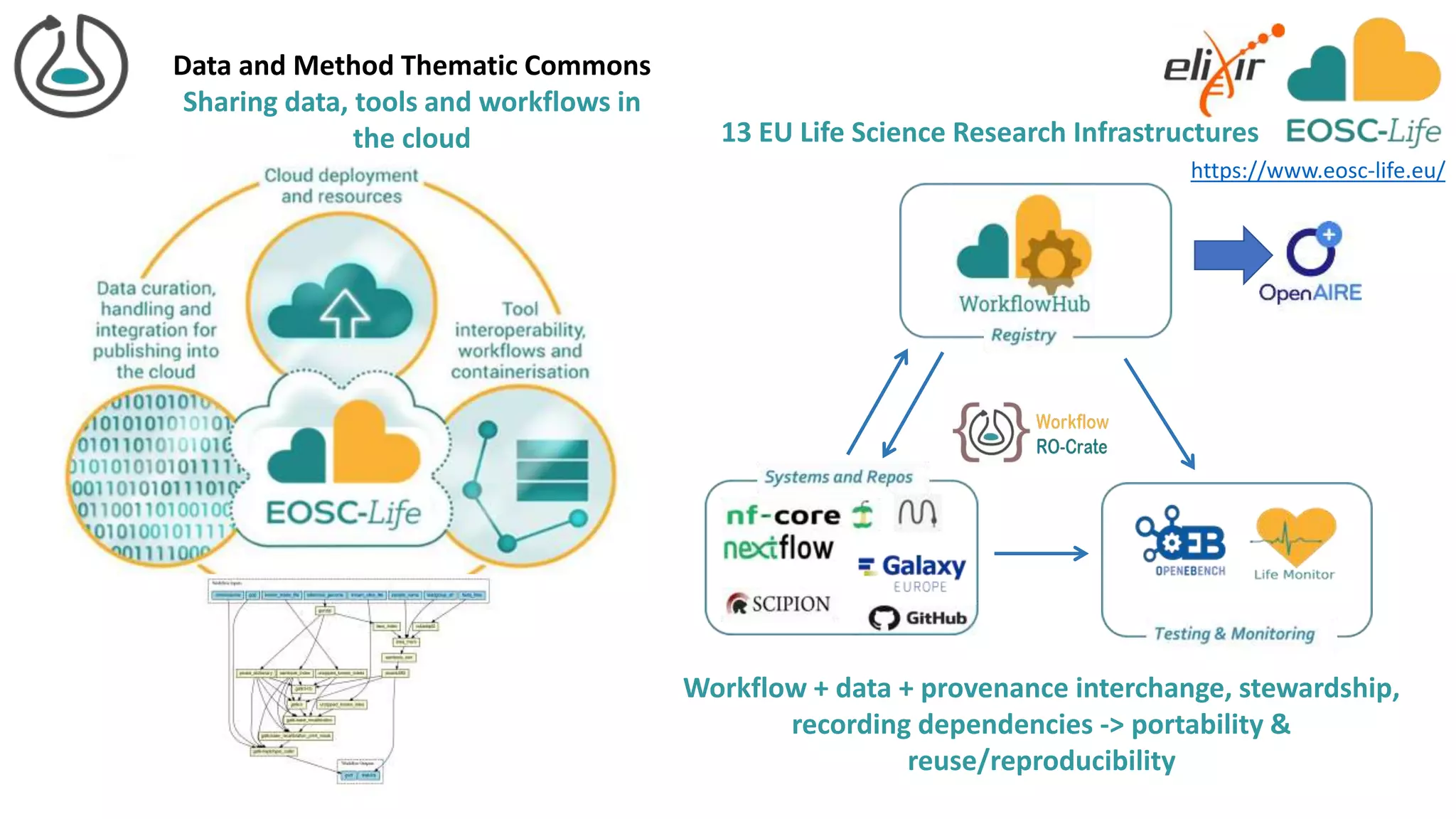
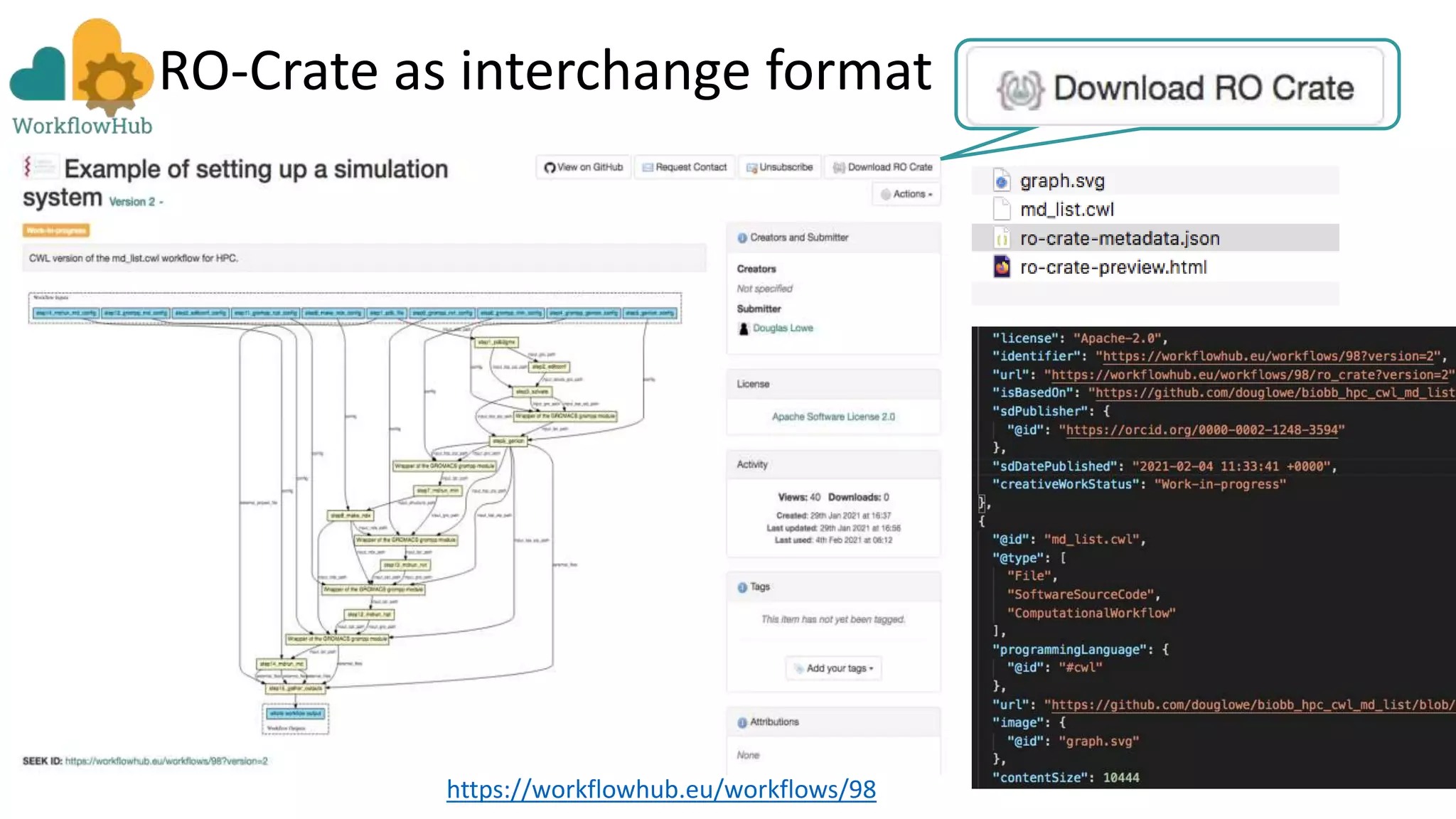
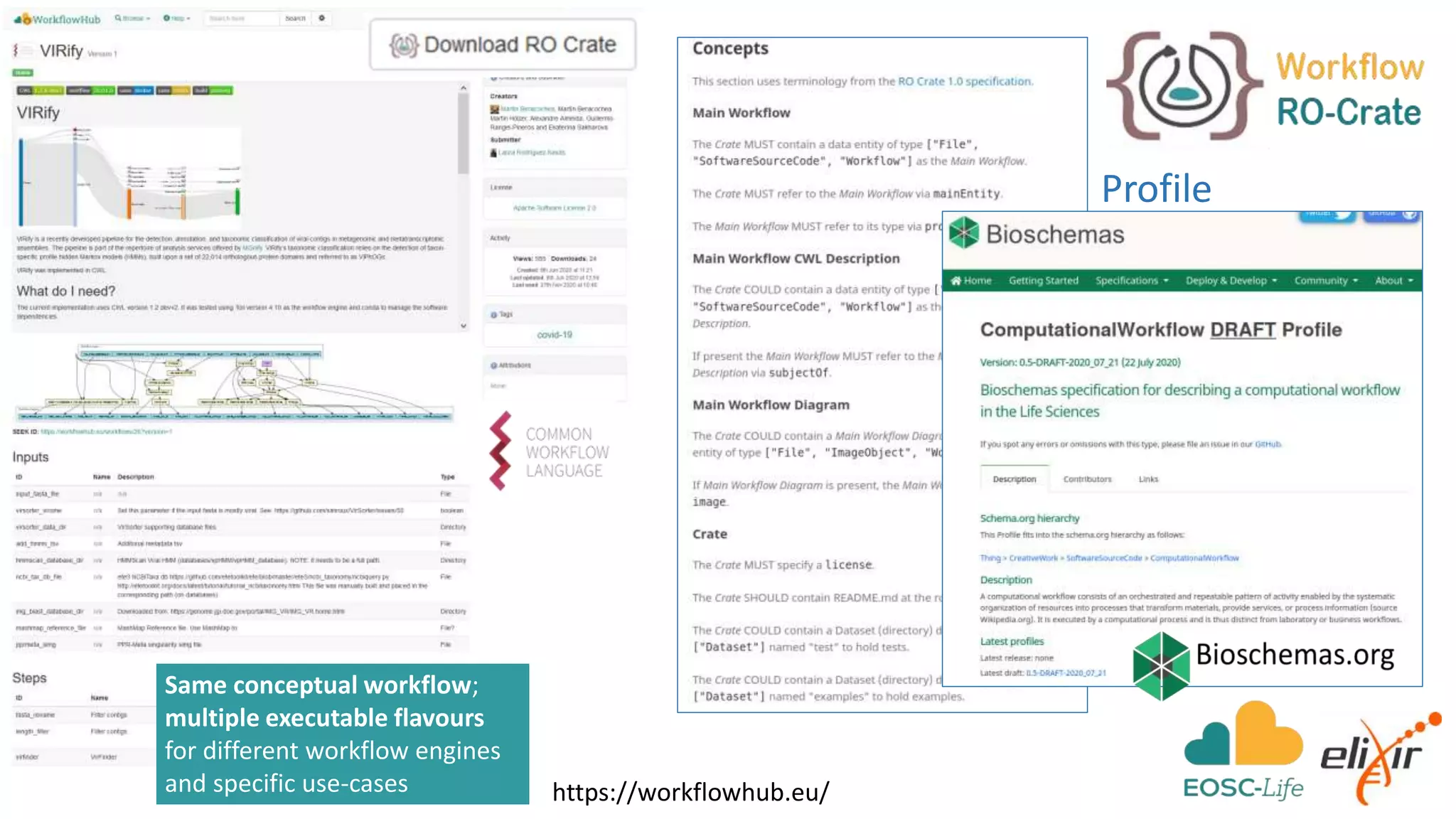
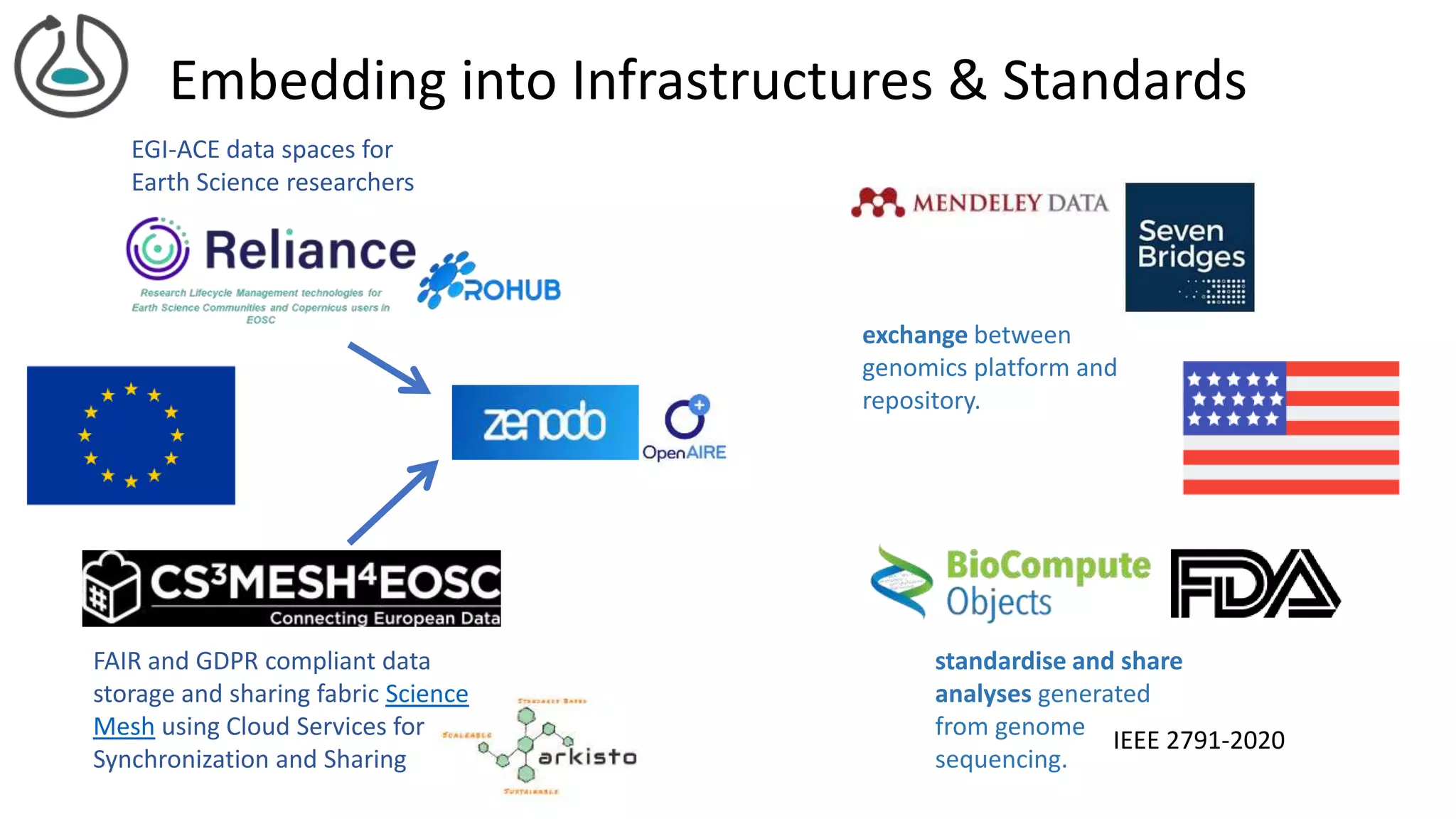
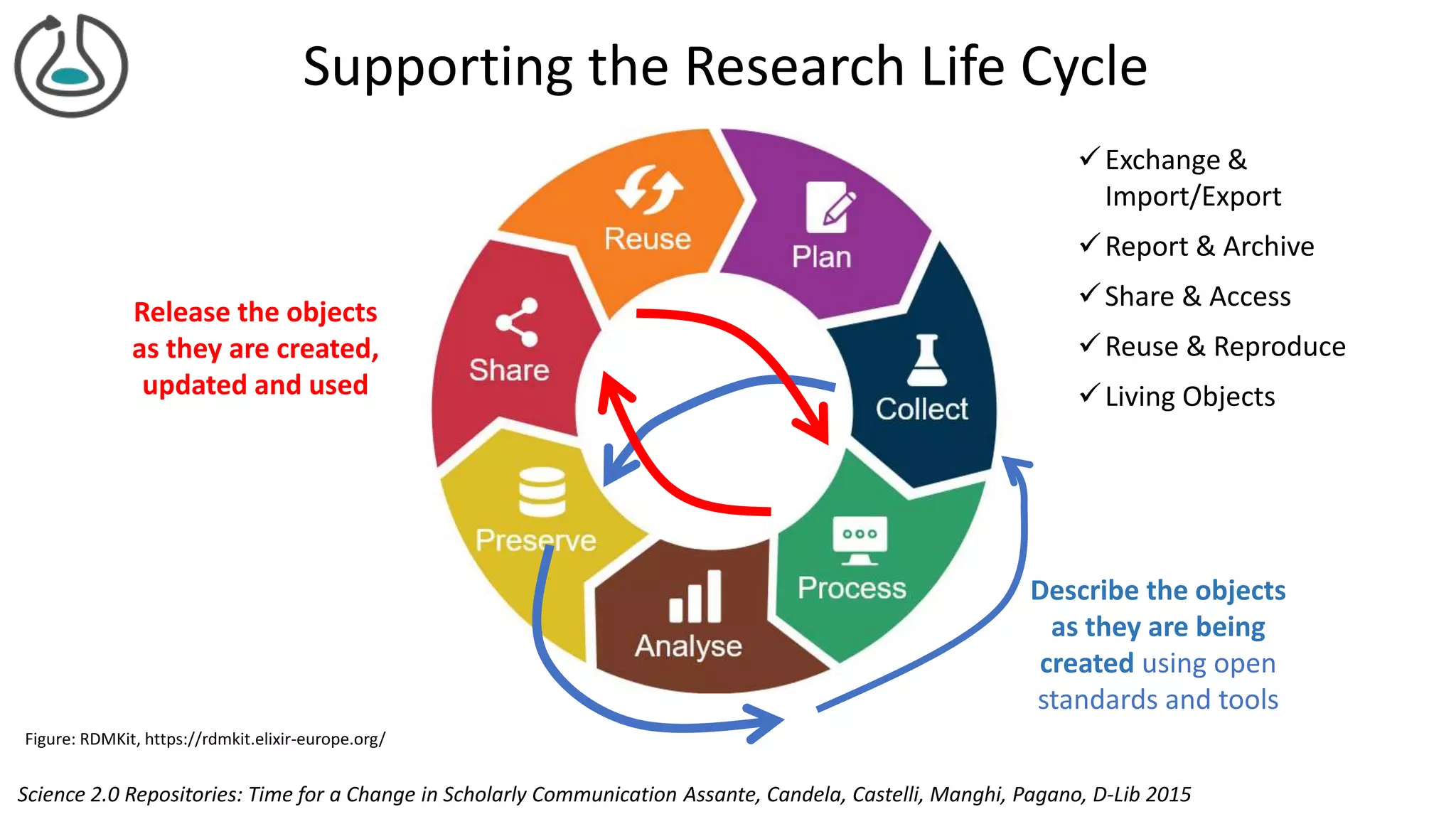
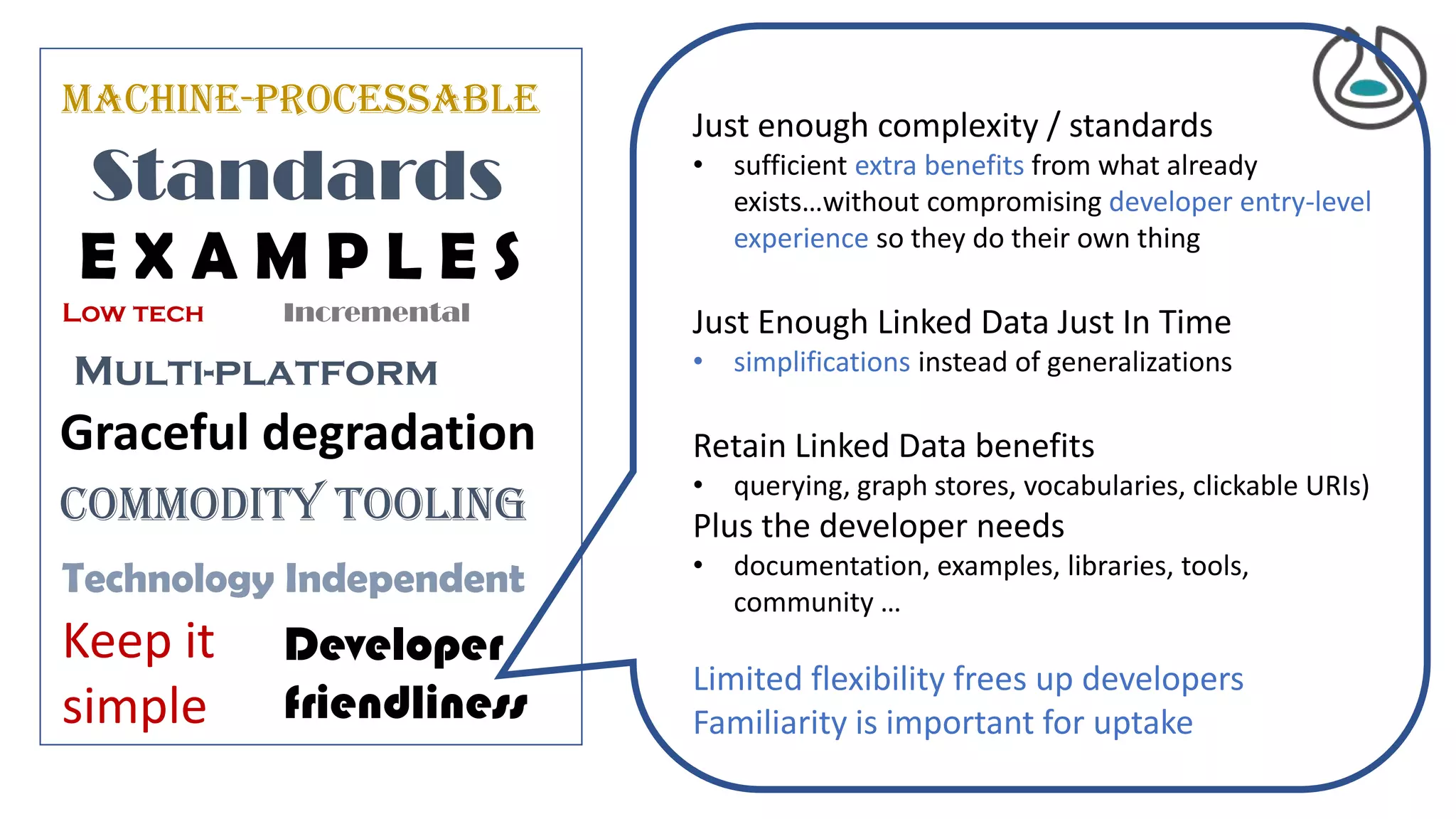
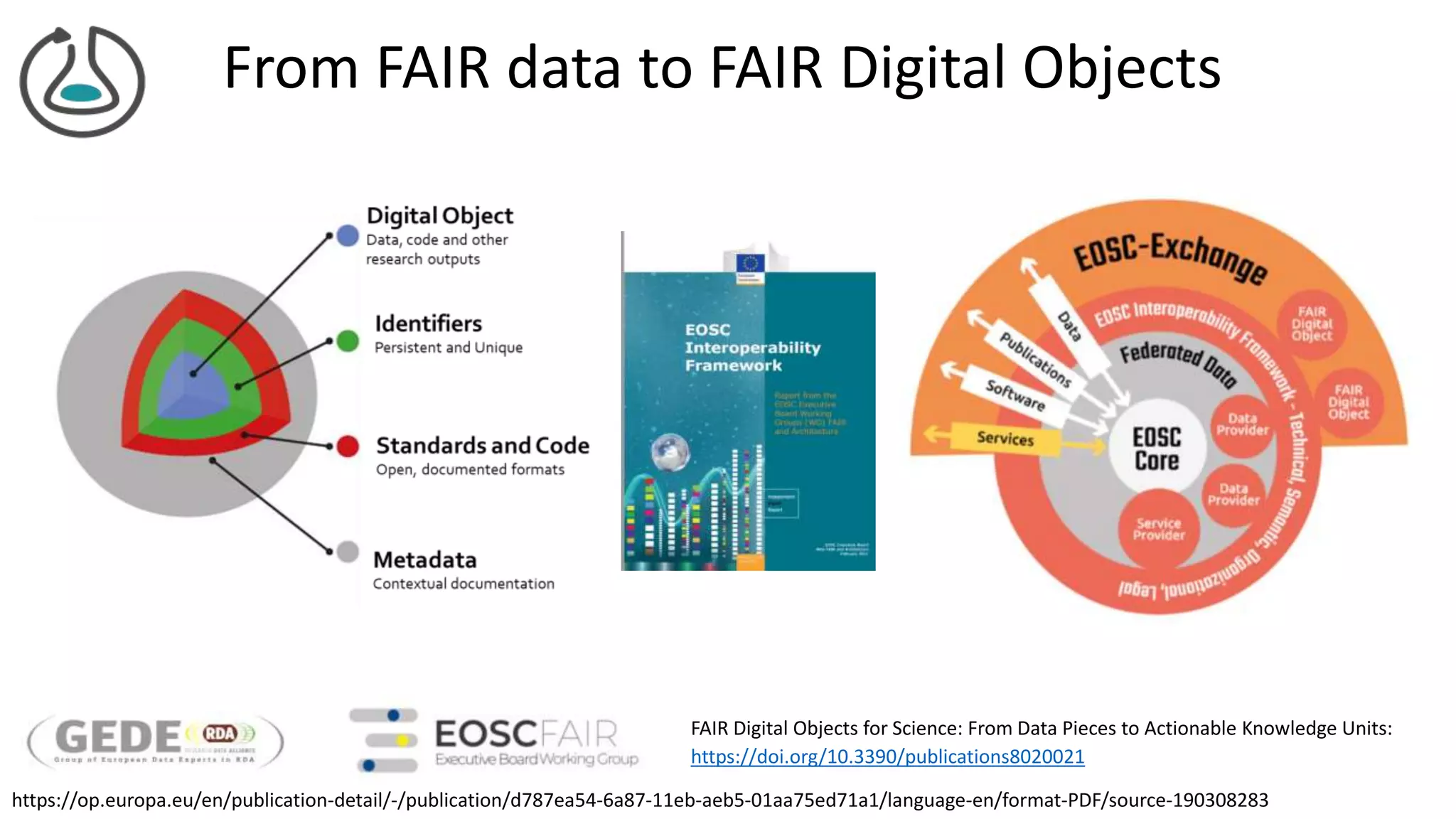
![FAIR Digital Objects
Actionable knowledge unit
Digital butterfly – digital twins
Bags of references
courtesy Dimitris Koureas
Coordinator DiSSCo EU Research
Infrastructure
Specimen object image
courtesy of Alex Hardisty
[Hardisty et al, 2020]](https://image.slidesharecdn.com/2021-02-25-ro-crate-fdo-final-210303145802/75/RO-Crate-A-framework-for-packaging-research-products-into-FAIR-Research-Objects-22-2048.jpg)
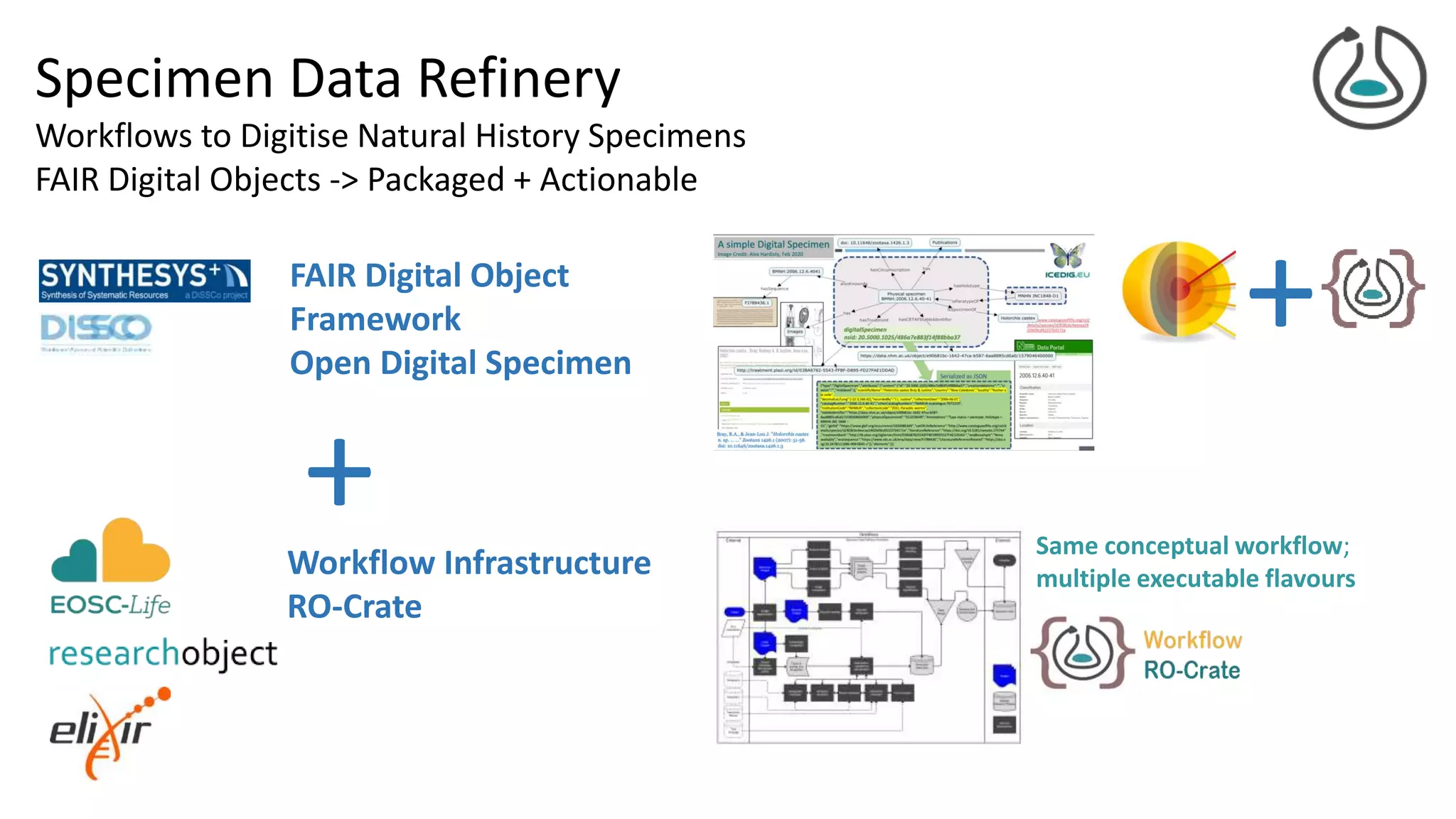
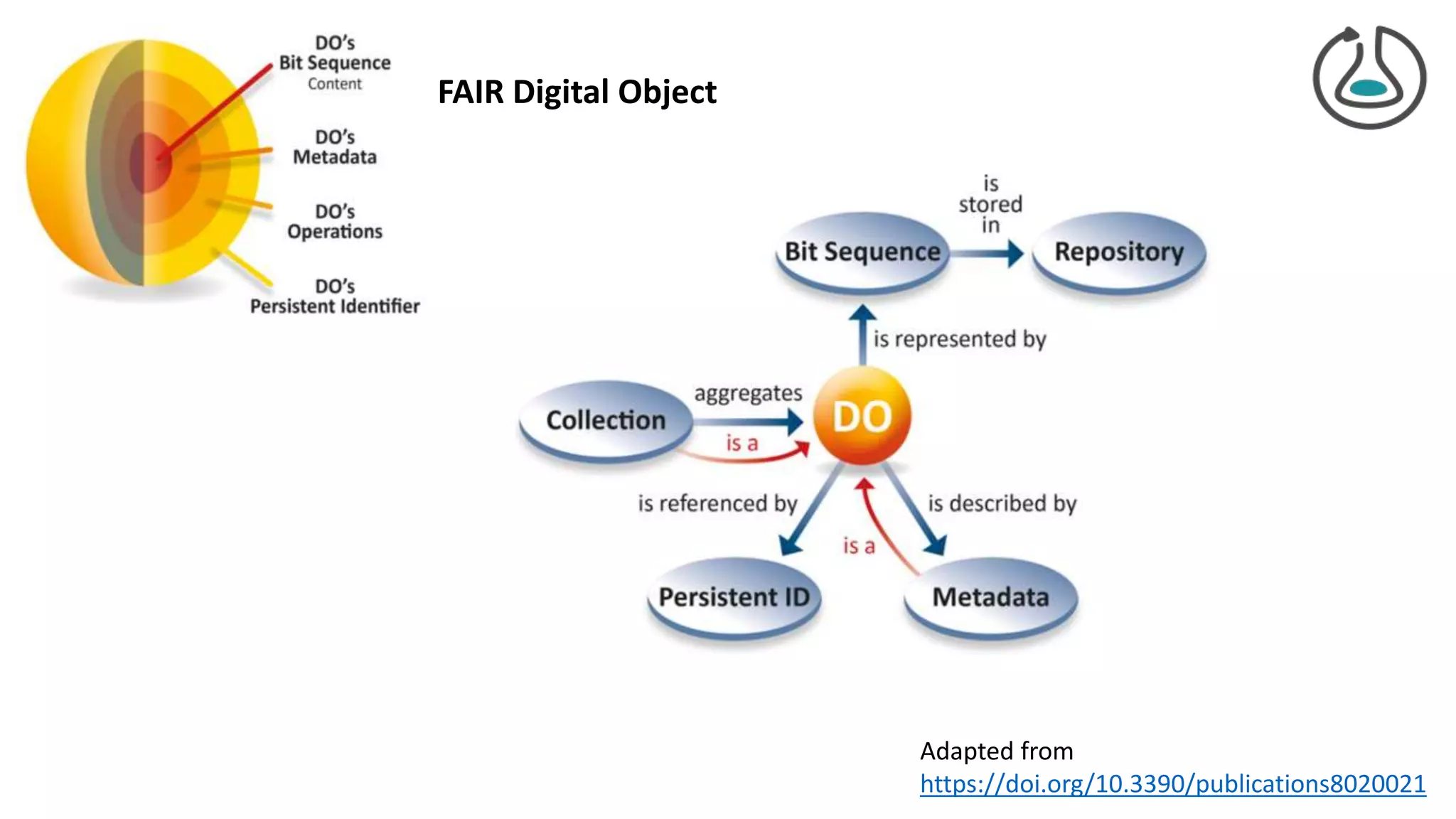
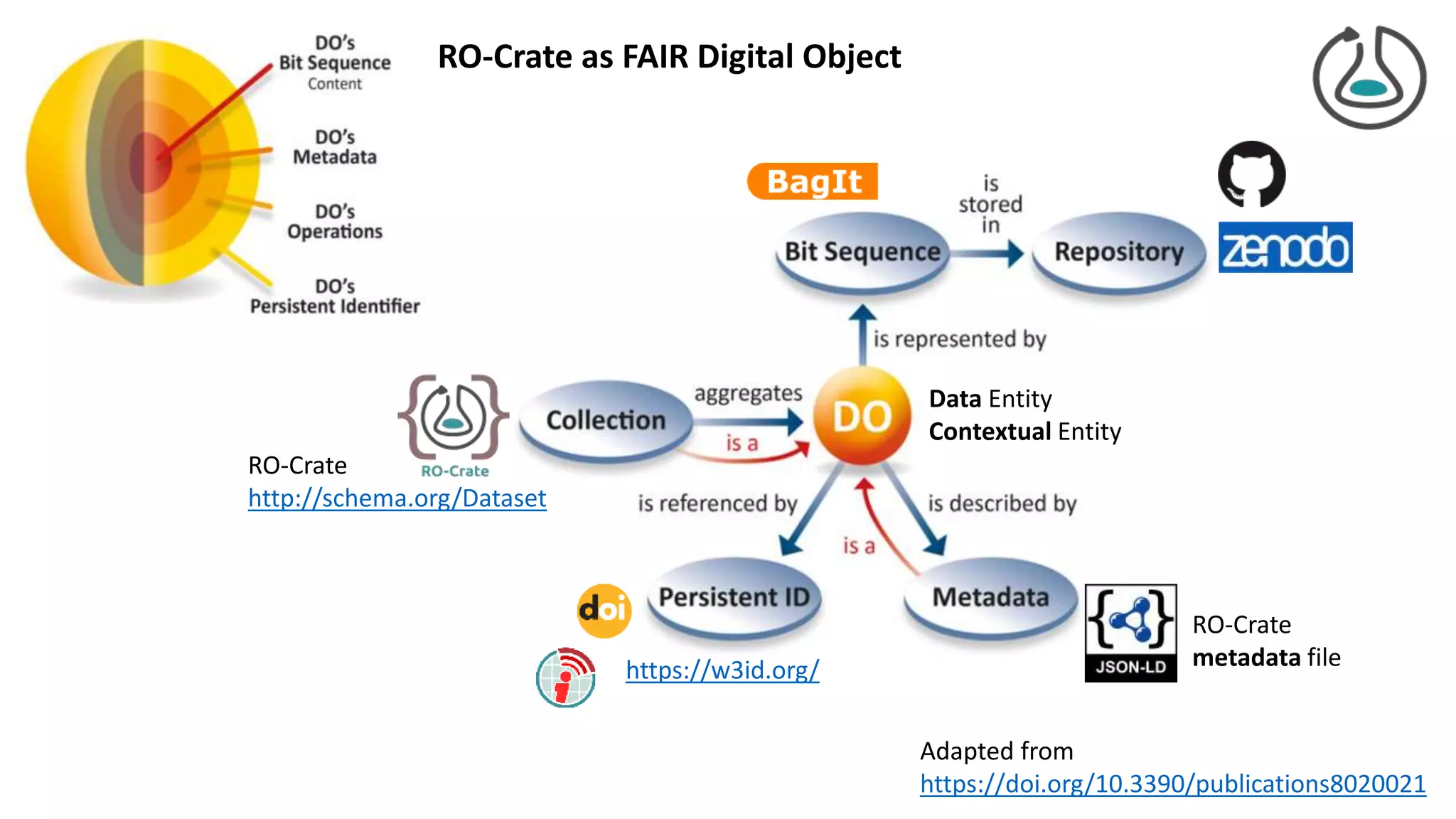
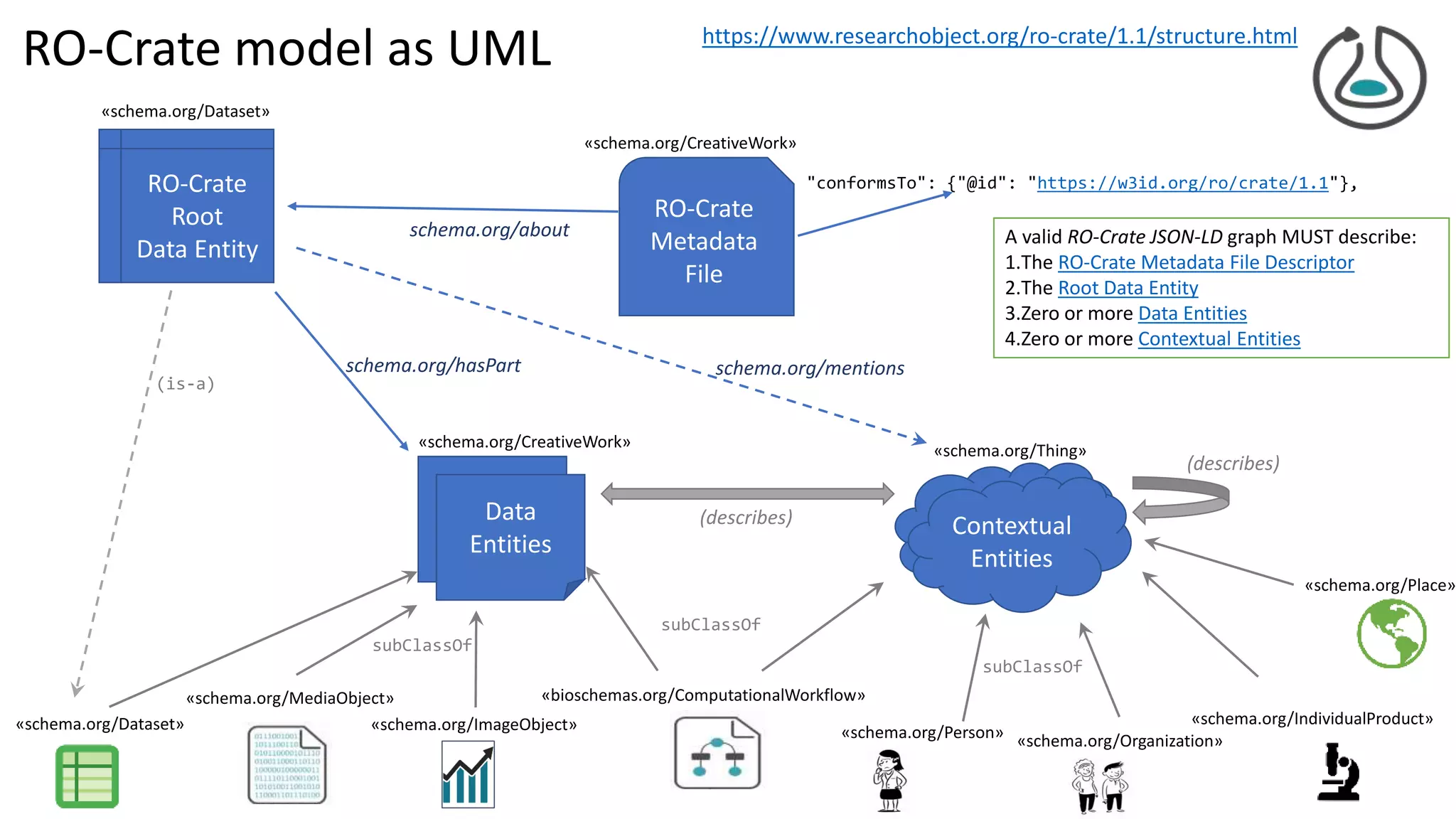
![{ "@id": "cp7glop.ai",
"@type": "File",
"name": "Diagram showing trend to increase",
…
},
…
{ "@type": "CreativeWork",
"@id": "ro-crate-metadata.json",
"conformsTo": {"@id": "https://w3id.org/ro/crate/1.1"},
"about": { "@id": "./" }
}
{ "@context": "https://w3id.org/ro/crate/1.1/context",
"@graph": [
Collection
RO-Crate metadata file descriptor
RO-Crate root dataset
..aggregates Data entities
..described w/ contextual entities
{ "@id": "./",
"identifier": "https://doi.org/10.5281/zenodo.1009240",
"@type": "Dataset",
"hasPart": [
{ "@id": "cp7glop.ai" },
{ "@id": "lots_of_little_files/" },
{ "@id": "communities-2018.csv" },
{ "@id": "https://doi.org/10.4225/59/59672c09f4a4b" },
{ "@id": "SciDataCon Presentations/AAA_Pilot_Project_Abstract.html" }
],
"author": { "@id": "https://orcid.org/0000-0002-8367-6908" },
"publisher": { "@id": "https://ror.org/03f0f6041" },
"citation": { "@id": "https://doi.org/10.1109/TCYB.2014.2386282"},
"name": "Presentation of user survey 2018"
},
Flat list of metadata per entity
JSON-LD preamble
"hasPart": [
{ "@id": "cp7glop.ai" },
{ "@id": "lots_of_little_files/" },
{ "@id": "communities-2018.csv" },
{ "@id": "https://doi.org/10.4225/59/59672c09f4a4b" },
{ "@id": "SciDataCon-Presentations/AAA_Pilot_Abstract.html"}
],](https://image.slidesharecdn.com/2021-02-25-ro-crate-fdo-final-210303145802/75/RO-Crate-A-framework-for-packaging-research-products-into-FAIR-Research-Objects-27-2048.jpg)
![Data and Contextual entities
described within RO-Crate Metadata File
Base vocabulary & types: schema.org
Cross-references to further contextual entities
RO-Crate principle:
Reuse existing PIDs and URLs
..but always describe entities which lack a
human-readable resolution
Metadata
{
"@id": "https://orcid.org/0000-0002-8367-6908",
"@type": "Person",
"affiliation": { "@id": "https://ror.org/03f0f6041" },
"name": "J. Xuan"
}
{
"@id": "https://ror.org/03f0f6041",
"@type": "Organization",
"name": "University of Technology Sydney",
"url": "https://www.uts.edu.au/"
}
{
"@id": "figure.png",
"@type": ["File", "ImageObject"],
"name": "XXL-CT-scan of an XXL Tyrannosaurus rex skull",
"identifier": "https://doi.org/10.5281/zenodo.3479743",
"author": {"@id": "https://orcid.org/0000-0002-8367-6908"},
"encodingFormat": "image/png"
}](https://image.slidesharecdn.com/2021-02-25-ro-crate-fdo-final-210303145802/75/RO-Crate-A-framework-for-packaging-research-products-into-FAIR-Research-Objects-28-2048.jpg)
